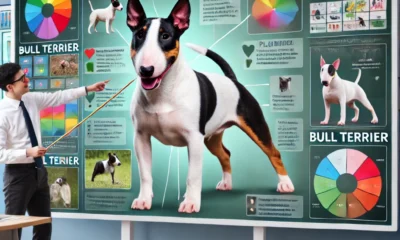SMALL DOG BREEDS
Merle Chihuahua: A Comprehensive Guide

Introduction
TheMerle Chihuahua is a stunning variation of the popular Chihuahua breed, known for its unique coloring and energetic personality. This breed has captured the hearts of dog enthusiasts across the globe, but also raises important considerations regarding genetics and health. If you’re interested in owning or learning more about this charismatic dog, this guide dives into everything you need to know, from its distinct coloration to potential health concerns.
For more information regarding 4 seasonal cxcercieses of all dog breeds recommended by the doctors and experts,you can visit our youtube channel:
https://www.youtube.com/@Dogsreaders

Types of Merle Chihuahua

Merle Chihuahuas come in various types, largely characterized by their distinct coat colors and patterns. These types result from the Merle gene, which creates patches of diluted color throughout the coat. Here are some popular types of Merle Chihuahuas:
Long-Haired Merle Chihuahua

Known for its beautiful flowing coat, the long-haired Merle Chihuahua requires regular grooming to maintain its silky fur. This type often features diverse colors and merle patterns, adding to its visual appeal.
Smooth-Coat Merle Chihuahua

This type boasts a short, smooth coat that’s easier to maintain than its long-haired counterpart. The smooth-coat Merle Chihuahua typically displays clear and striking merle markings, making the pattern more prominent.
Teacup Merle Chihuahua

A small and delicate version, the teacup Merle Chihuahua is just a miniature form of the standard size. Despite its tiny stature, the teacup’s coat can exhibit any of the captivating merle variations, from blue to lilac.
Deer Head Merle Chihuahua
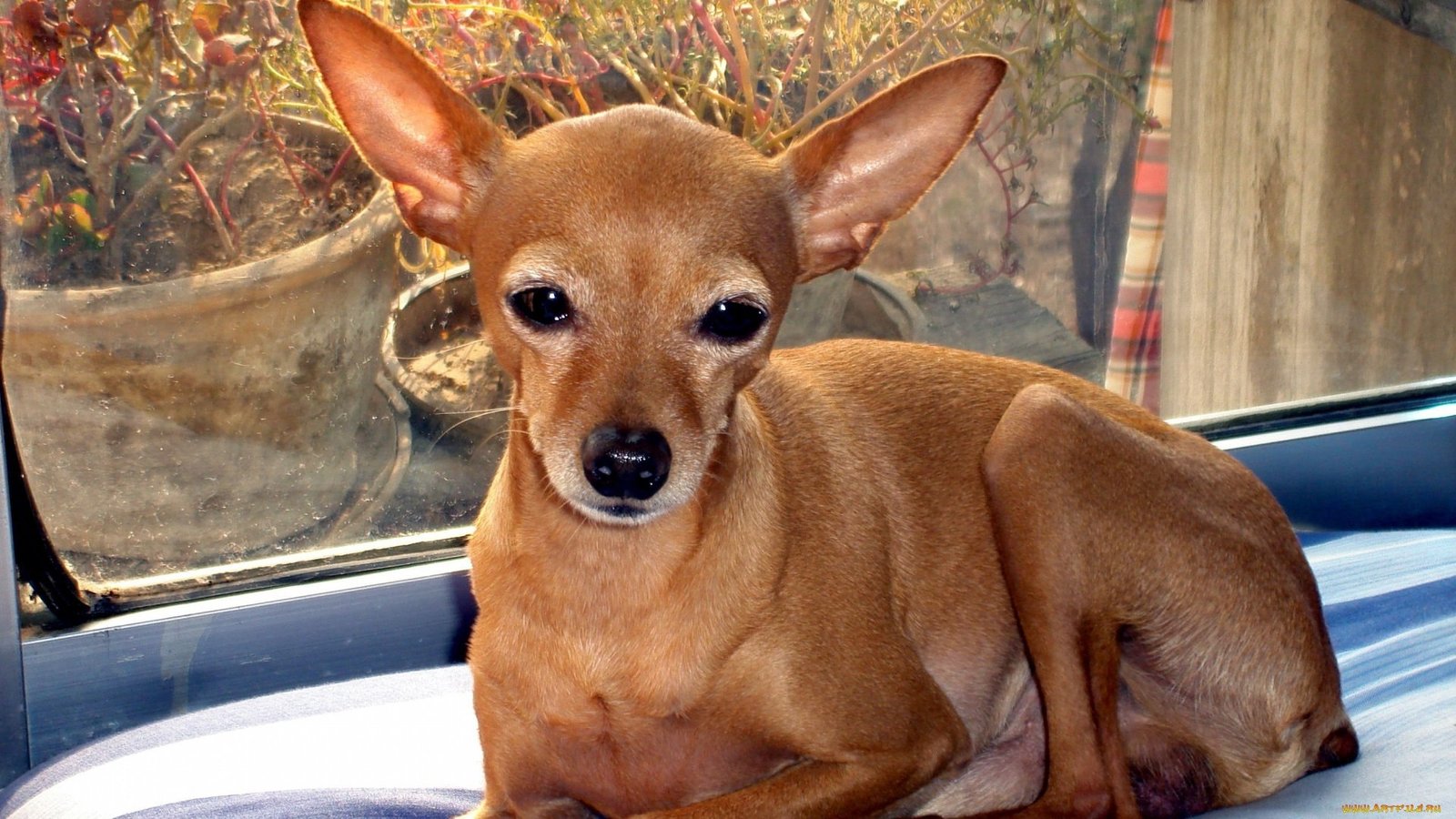
Distinguished by its elongated head and larger ears resembling a young deer, this type combines an enchanting head shape with the unique merle pattern, making it a beloved choice among enthusiasts.
Apple Head Merle Chihuahua
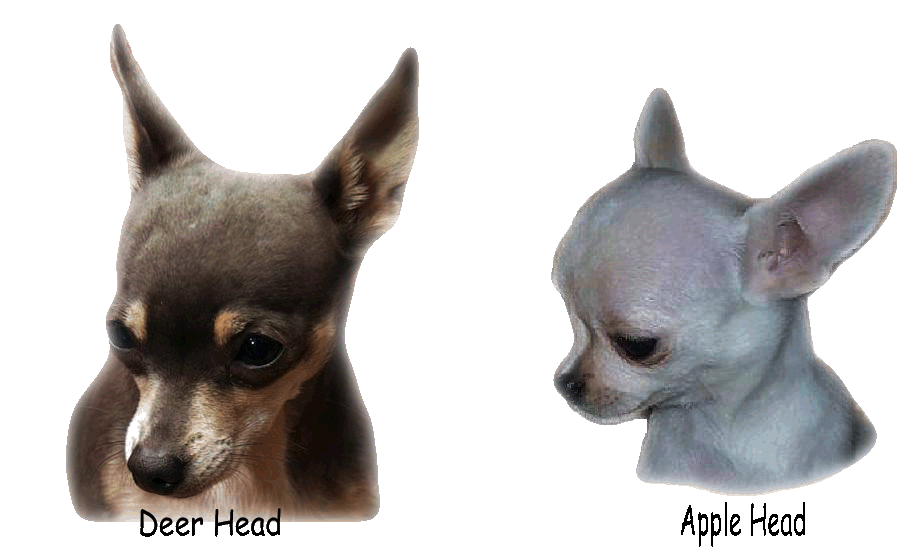
Characterized by its rounded head shape resembling an apple, this type features a distinct profile. When combined with a merle coat, the apple head Merle Chihuahua is a charismatic and eye-catching pet.
Understanding these types allows prospective owners to appreciate the variety within Merle Chihuahuas and select the one that best fits their lifestyle and preferences, while always considering health aspects amidst the beauty of these dogs.
What is a Merle Chihuahua?
The Merle Chihuahua is a Chihuahua with a speckled or “marbled” coat pattern caused by a specific genetic variation. This pattern can range from subtle dappling on a solid coat to elaborate swirls of gray, black, or blue. While their appearance is striking, it’s their energetic and loyal personality that makes them iconic members of the Chihuahua family. They are small in size, yet boast a larger-than-life personality, excelling as companion dogs for households of all sizes.
Scientific Diagram of the Merle Chihuahua’s Genetics

The unique Merle pattern in Chihuahuas is the result of a specific genetic trait. Below is a scientific diagram illustrating the genetic makeup associated with this distinctive coloration:
This diagram reveals the interaction between genes responsible for the merle pattern. The Merle gene, symbolized as “M,” is a dominant gene, meaning only one copy is required for the pattern to be expressed. However, when two Merle genes are present (MM), health problems may arise, highlighting the importance of careful breeding. This depiction helps understand how the Merle gene is inherited and its implications on the Chihuahua’s health.
Scientific Diagram of the Merle Chihuahua’s URLs Link
To explore the genetics of the Merle Chihuahua further, the following links provide additional diagrams and resources for a deeper understanding of this fascinating trait:
Genetics of Merle Coat Patterns
Health Implications of Merle Chihuahuas
These resources offer detailed explanations and visual representations of how the Merle gene functions, promoting informed breeding practices and awareness of related health concerns.
Understanding the Merle Coat Genetic Variation

The Merle gene modifies pigmentation in the dog’s coat, eyes, and sometimes even skin color. It is typically inherited when one parent carries the Merle gene. While this gene gives the Merle Chihuahua its distinct aesthetic appeal, it can come with genetic risks if not bred responsibly. Double merle breeding—when two merle dogs are mated—can lead to severe health issues for offspring, including congenital blindness, deafness, and other health complications.
The American Kennel Club (AKC) offers detailed guidelines on responsible breeding practices to reduce the health risks associated with specific genetic traits. You can explore their official resources on breeding ethics here: akc.org/breeds.
Distinctive Features of the Merle Chihuahua
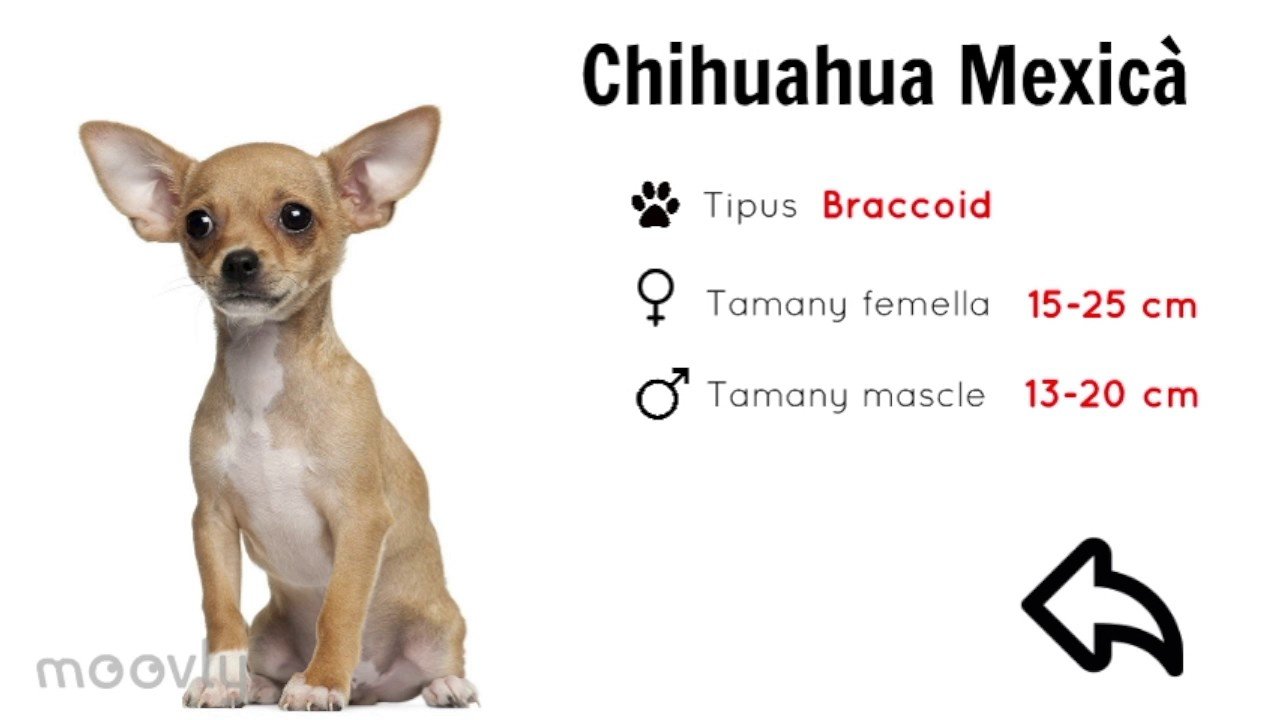
Merle Chihuahuas are cherished for their unique physical traits and charming personalities:
- Coat Types: They can have either long or short coats. The merle pattern looks equally mesmerizing on both variations.
- Eye Color: One of their most fascinating features is their potential for unique eye colors. Some Merle Chihuahuas might have one or both eyes in shades of blue or a mix of colors (heterochromia).
- Size: True to the Chihuahua breed, Merle Chihuahuas are small and compact, typically weighing between 3 and 6 pounds.
If you’d like to review breed standard guidelines for the Chihuahua dog breed, you can check the official U.S. Department of Agriculture (USDA) pages here on pet care standards and best practices for dog breeders licensed under USDA guidelines: usda.gov/pet-welfare.
Scientific Research on Merle Chihuahuas
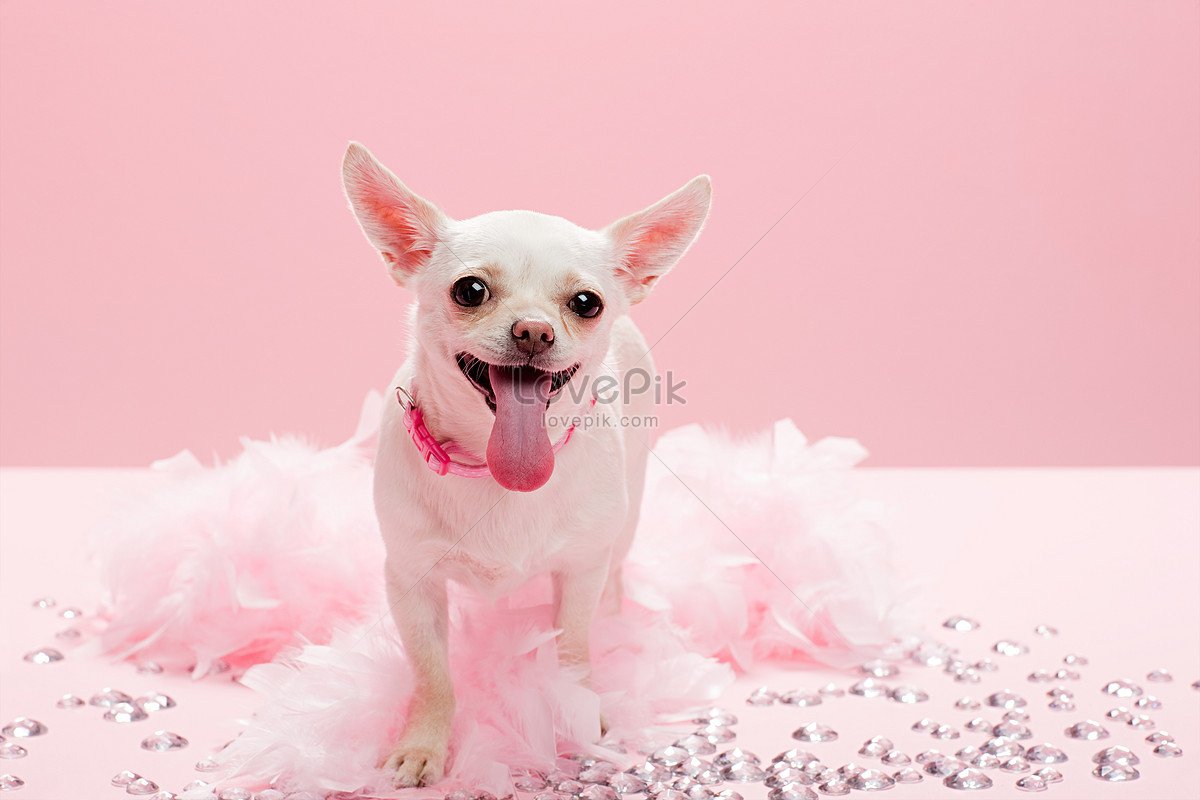
picture cradit to the concerning water marks
Research on Merle Chihuahuas focuses primarily on the genetic implications of the Merle gene and its impact on health. Scientists have conducted extensive studies to understand the inheritance patterns and health effects associated with this gene.
One key finding underscores concerns regarding double merle breeding and the associated risks of congenital health issues, highlighted in studies by veterinary geneticists. For those interested in deeper understanding the genetics and biology of the Merle gene, the journal article “Merle Coat Pattern and Associated Health Disorders in Dogs.” This is a starting point, accessible through ScienceDirect.
Additionally, veterinary research programs have analyzed the prevalence of ocular and auditory defects in merle-patterned breeds. The research published by the Veterinary Sciences journal offers insights into the correlation between the merle coat and sensory impairments, available at MDPI Veterinary Sciences. Overall, these studies emphasize the importance of informed breeding practices and the need for genetic testing to preserve the health and well-being of Merle Chihuahuas.
Personality and Temperament
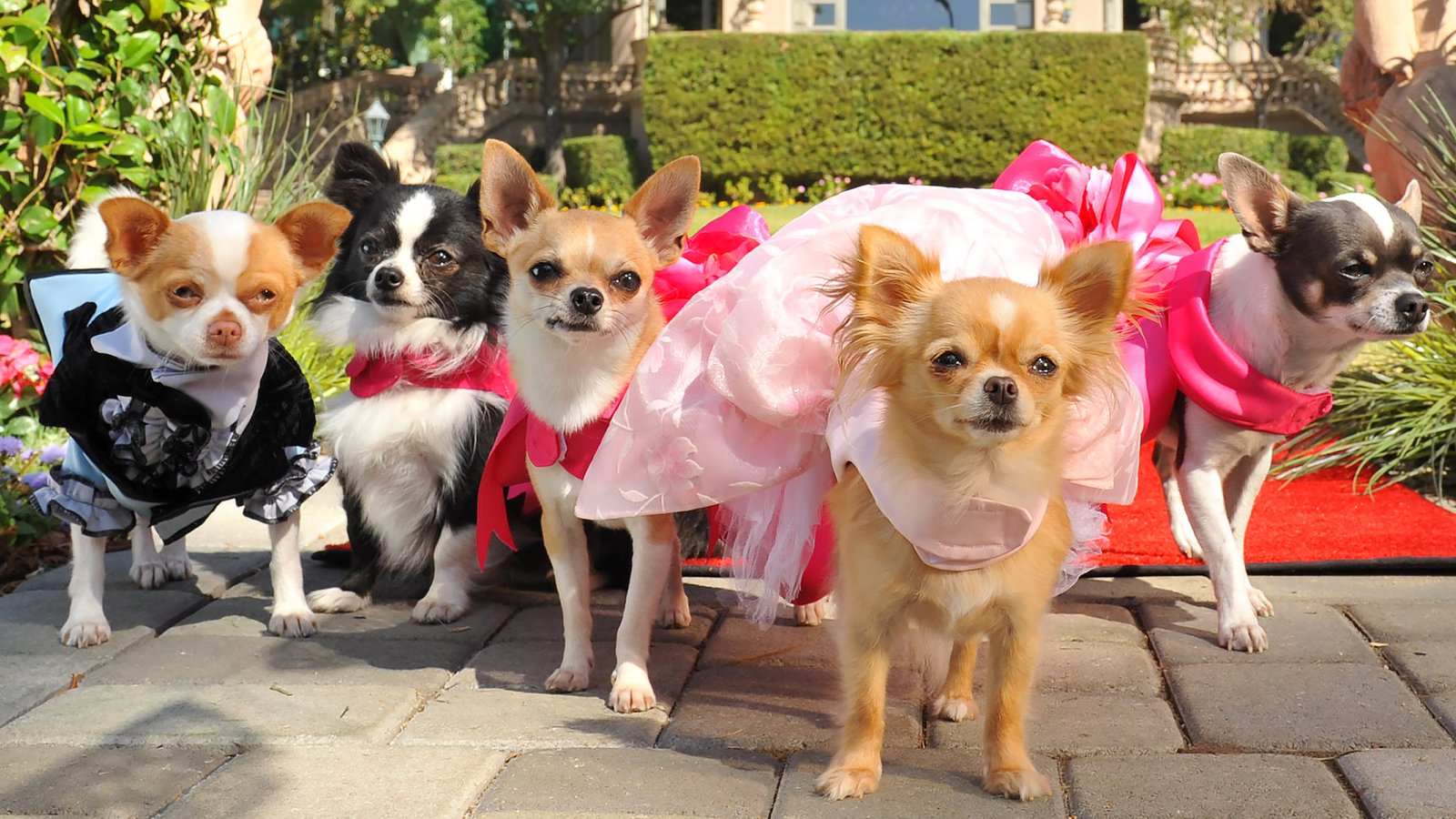
Like all Chihuahuas, Merle Chihuahuas are fiercely loyal, smart, and outgoing. Despite their small size, they are energetic and assertive, often acting as though they are the largest dog in the room. They bond closely with their families, but should be socialized early to prevent shyness or excessive barking around strangers.
For tips on dog training, check out the ASPCA’s official online training resources here, where they address breed-specific needs for smaller dogs like Chihuahuas: aspca.org/pet-training.
Health Concerns in Merle Chihuahuas

Merle Chihuahuas are generally healthy dogs if bred responsibly. However, improper breeding practices may lead to health issues like:
- Hearing Loss
- Vision Problems
- Heart Issues
- Patellar Luxation (a common issue in small dogs)
Responsible Breeders. They avoid double-merle breeding to minimize these risks and provide thorough health checks for their puppies.
More information on breed health and screenings can be found at the Canine Health Information Center (CHIC), part of the Orthopedic Foundation for Animals (OFA): [offa.org/health](https://www.ofa.org/).
Recommended Temperature Levels for Merle Chihuahuas
Merle Chihuahuas, like all Chihuahuas, are more comfortable in warmer environments due to their small size and lower body fat. These dogs thrive indoors at temperatures ranging from 65°F to 75°F. It is essential to provide adequate warmth during colder months, as Chihuahuas can become susceptible to hypothermia.
Consider using dog sweaters or blankets to keep them cozy. Additionally, be mindful of extreme heat, as Chihuahuas can overheat quickly. Ensure they have access to cool, shaded areas and plenty of fresh water during hot weather to prevent heatstroke.
For more detailed information on maintaining suitable living conditions for your Merle Chihuahua, visit the American Veterinary Medical Association (AVMA) site: avma.org/resources/pet-owners/petcare/chihuahua-care-tips.
Adopting a Merle Chihuahua Responsibly

If you wish to adopt a Merle Chihuahua, it is essential to work with reputable breeders or consider adoption through rescue organizations. Avoid purchasing dogs from backyard breeders or puppy mills, as they often neglect genetic health considerations.
To find adoption and breeder resources, the Humane Society of the United States (HSUS) maintains an extensive list of verified adoption agencies and ethical breeders. Access more here: humane.org/adopt-a-pet.
Merle Chihuahua Diet

standards, for they maintain their vibrant coat and support their overall well-being. It’s important to provide portion-controlled meals to prevent obesity, a common issue in smaller breeds. You can refer to the U.S. Food and Drug Administration (FDA) guidelines on pet food standards for more information: fda.gov/animal-veterinary.
Merle Chihuahua Diet Available in Market
When selecting commercial dog food for Merle Chihuahuas, it is important to choose brands that offer high-quality, nutrient-rich options tailored to their specific needs. Here is a table of recommended dog food brands that provide suitable nutrition for Merle Chihuahuas:
| Brand Name | Product Line | Key Features |
| Royal Canin | Chihuahua Adult Dry Dog Food | Designed specifically for Chihuahuas, high digestibility, supports coat health |
| Hill’s Science Diet | Small Paws for Small Breeds | Balanced nutrition for small breeds, contains omega-6 fatty acids for skin care |
| Blue Buffalo | Life Protection Formula Small Breed | High-quality protein, small kibble size, enriched with vitamins and minerals |
| Wellness CORE | Small Breed Formula | Grain-free, high protein, includes probiotics for digestion |
| Merrick | Lil’ Plates Grain-Free Small Breed | Real deboned meat, tailored calorie content, promotes healthy weight |
Ensure to consult with your veterinarian before making any changes to your dog’s diet to accommodate any specific health needs or preferences of your Merle Chihuahua.
Available Colors of Merle Chihuahuas in the Market

Merle Chihuahuas are known for their striking and unique coat patterns, which can vary significantly in color. Below is a table outlining some of the most common Merle Chihuahua color variations in the market:
| Color Variation | Description |
| Blue Merle | A combination of gray, black, and blue patches |
| Red Merle | A mix of lighter red hues with darker patches |
| Chocolate Merle | Deep brown with lighter brown patches |
| Black Merle | Black base coat with patches of lighter colors |
| Lilac Merle | Pale grayish-pink with darker patches |
| Cream Merle | Light cream with subtle merling, often understated |
| Sable Merle | Sable base with variations in the Merle pattern |
These color variations contribute to the distinct appearance of Merle Chihuahuas, making them a popular choice among dog enthusiasts. It’s essential for buyers to understand that while these colors are appealing, breeding practices should prioritize health over aesthetics to maintain the welfare of the breed.
Merle Chihuahua in Summer

During the summer months, it’s crucial to ensure that Merle Chihuahuas are well-protected from the heat. Due to their small size, they are particularly susceptible to the harmful effects of high temperatures and dehydration. Always provide them with access to shaded areas and ensure they have a constant supply of fresh water to drink.
Limit outdoor activities to cooler parts of the day, such as early mornings or late evenings. Additionally, consider using cooling mats or vests for added comfort during warm weather. Be cautious with hot surfaces like pavement, as they can burn delicate paws.
Monitoring for signs of heat exhaustion, such as excessive panting, drooling, or lethargy, is vital to ensure your Merle Chihuahua stays safe and comfortable throughout the summer season. For further tips on keeping your small breed cool during summer, check out the resources from the American Society for the Prevention of Cruelty to Animals (ASPCA): aspca.org/seasonal-pet-safety.
Merle Chihuahua in Winter

During the winter months, Merle Chihuahuas may require special attention to stay warm and comfortable. Given their compact size and sometimes sparse coat, they can be more susceptible to cold weather.
Providing warm clothing or a cozy bed is recommended, along with limiting outdoor exposure during harsh conditions. For guidance on caring for pets in winter, consult the U.S. Department of Agriculture (USDA) pet care resources: usda.gov/animal-welfare.
Merle Chihuahua in Autumn
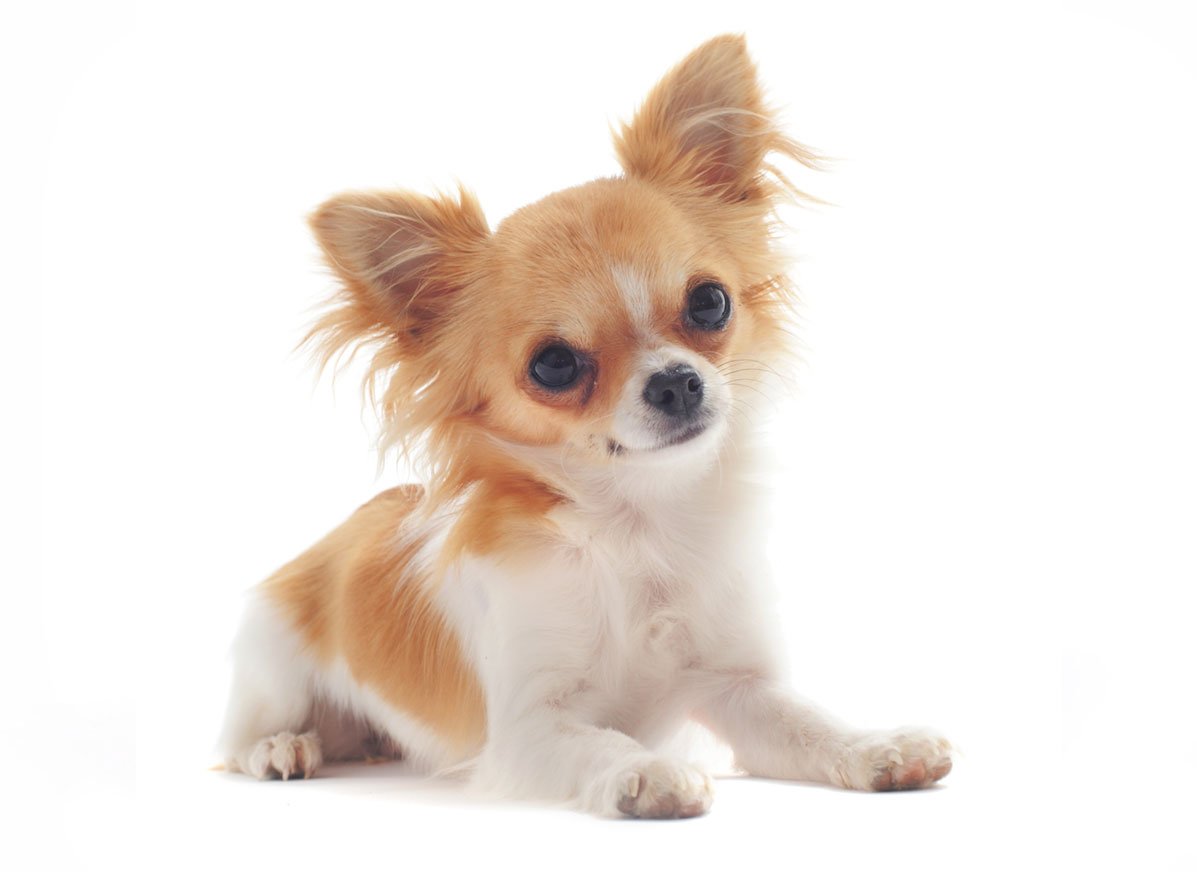
Autumn provides a perfect backdrop for outdoor activities with your Merle Chihuahua. The cooler temperatures and vibrant surroundings can be invigorating for both owner and pet. Maintain regular exercise and check for allergies or insect bites during autumn walks. For more on keeping your pet safe and healthy, visit the Centers for Disease Control and Prevention (CDC) page on seasonal pet care: cdc.gov/healthypets.
Merle Chihuahua in Spring
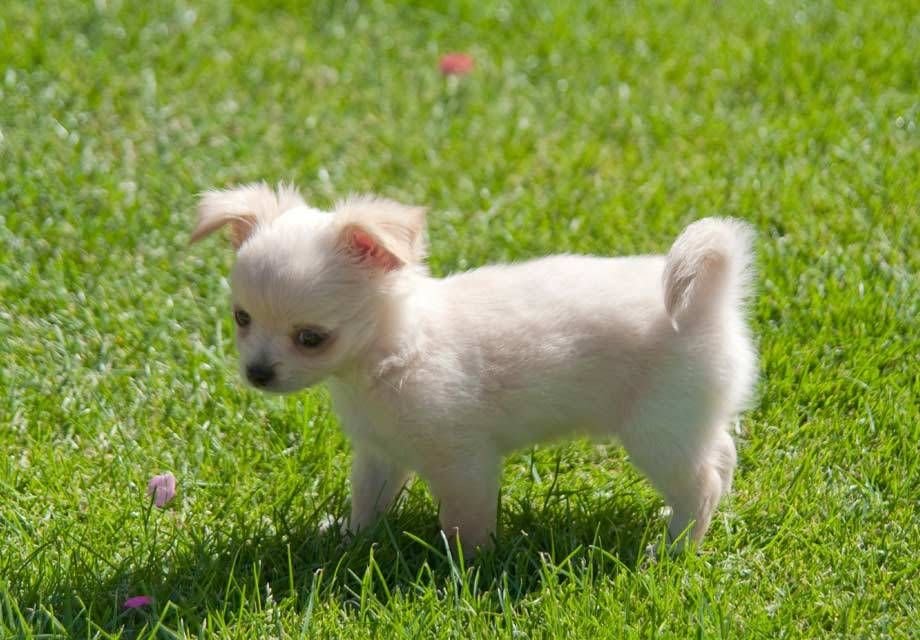
Springtime brings an opportunity for renewal and bonding with your Merle Chihuahua. This season, however, also calls for vigilance against fleas and ticks due to increased outdoor activity. Regular grooming and vet check-ups should be a priority to ensure your pet remains healthy and happy. Guidance on spring pet care can be found on the Environmental Protection Agency (EPA) website, which offers insights into pest control for pets: epa.gov/pets.
Pros and Cons of Owning a Merle Chihuahua
Owning a Merle Chihuahua comes with various advantages and challenges that prospective owners should consider:
Pros
- Unique Appearance:
- The merle coat pattern is striking and visually appealing, making these dogs stand out.
- Loyal Companionship:
- Merle Chihuahuas are known for their strong loyalty and affectionate nature, often forming close bonds with their owners.
- Compact Size:
Their small size makes them ideal for apartment living and easy to travel with.
Cons
- Health Risks:
The Merle gene can lead to health issues, such as hearing and vision problems, necessitating careful breeding practices.
- Training Challenges:
Their strong-willed personality can sometimes be challenging for novice dog owners, requiring consistent training.
- Maintenance Needs:
Regular grooming and veterinary check-ups are essential to manage potential health issues, especially related to their unique coat.
For further information on pet health considerations, potential dog owners can refer to the Centers for Disease Control and Prevention (CDC) for general pet health guidelines: cdc.gov/healthypets. Additionally, the American Veterinary Medical Association (AVMA) provides resources on responsible pet ownership and breeding: avma.org/resources-tools.
Merle Chihuahua FAQs with Related Government Rules
Frequently Asked Questions
Is it legal to own a Merle Chihuahua in all states?
While Merle Chihuahuas are generally legal across the United States, prospective owners should check their local and state regulations, as some regions may have specific rules regarding pet ownership.
Are there government guidelines on breeding Merle Chihuahuas?
Yes, the U.S. Department of Agriculture (USDA) and other governmental bodies have set standards for ethical breeding practices to ensure the health and well-being of animals. Responsible breeders are expected to comply with these standards, which can be found here: [usda.gov/animal-welfare](https://www.usda.gov/animal-welfare).
The government recommends what health screenings for Merle Chihuahuas?
It is recommended to follow the guidelines provided by organizations such as the Canine Health Information Center (CHIC) and the Orthopedic Foundation for Animals (OFA) for health screenings. These guidelines help identify potential genetic conditions associated with the Merle gene and ensure the dog’s health and welfare.
Are there specific care regulations for Merle Chihuahuas in harsh weather conditions?
There are no specific federal regulations on pet care in extreme weather, but the USDA and other animal welfare organizations offer resources and best practices for keeping pets safe during cold or hot weather. Ensuring suitable shelter, food, and hydration is essential.
Law requires what vaccinations for Merle Chihuahuas?
Generally, all dogs must have up-to-date rabies vaccinations as per state laws. However, vaccination requirements may vary, so it is crucial for owners to check state-specific regulations and consult with their veterinarian.
For additional information on pet regulatory requirements, visit the U.S. Department of Agriculture’s (USDA) website on animal welfare: usda.gov/animal-welfare.
Recommended Books for Merle Chihuahua Owners
If you’re looking to delve deeper into the captivating world of Merle Chihuahuas, several books are highly recommended by veterinarians and canine experts. These books offer insights into understanding, training, and caring for your Merle Chihuahua. They cover a wide range of books. topics from health management to breed-specific traits.
- “The Complete Chihuahua Handbook: The Essential Guide for New and Prospective Chihuahua Owners” by Dr. Hope Lovelace
This comprehensive guide provides essential information on Chihuahua breeds, focusing on health care, training techniques, and understanding the unique characteristics of Merle Chihuahuas.
- “Merles: Secrets Behind the Rainbow” by Laura Patriquin
Explore the genetics, history, and controversy behind the merle coloration pattern in dogs. This book is a must-read for those interested in the scientific perspective on merle breeds.
- “Caring for Chihuahuas Made Easy: A Complete Guide to Chihuahua Care” by Sharon Vanderlip
This book offers practical advice on general Chihuahua care, with sections dedicated to addressing specific considerations for Merle Chihuahuas, including common health issues and maintenance tips.
- “Chihuahua Training: Dog Training for Your Chihuahua Puppy” by Paul Allen Pearce
Focused on training and behavior, this book provides insightful strategies tailored to the Merle Chihuahua’s temperament, helping owners establish a harmonious home environment.
These resources will equip you with the knowledge needed to provide the best care for your Merle Chihuahua, ensuring a healthy and fulfilling relationship with your pet.
Merle Chihuahua Latest Research and Related Government Resources
Recent studies on Merle Chihuahuas have further illuminated both the appeal and risks associated with the Merle gene. Researchers continue to investigate the genetic implications of Merle patterns, with a focus on identifying hereditary health issues that may arise from breeding practices.
One key finding is that double-merle breeding significantly increases the risk of auditory and visual impairments. To address these concerns, genetics researchers have endorsed the use of DNA tests to detect merle-associated health conditions early.
In response, several government-funded organizations and initiatives have provided resources to guide ethical breeding and emphasize health screening. The National Institutes of Health (NIH) supports research efforts to understand genetic disorders in dogs and offers valuable insights for breeders seeking to minimize health risks: nih.gov/research-training.
Additionally, the U.S. Department of Agriculture (USDA) Animal Welfare Division highlights the importance of adhering to best practices in breeding and maintaining animal well-being: usda.gov/animal-welfare.
For those involved in the breeding or ownership of Merle Chihuahuas, staying informed about the latest research and adhering to recommended guidelines will help ensure the health and well-being of these unique and beloved pets.

SMALL DOG BREEDS
”Choosing the Right Dog Breed: for Your Lifestyle”

A Very Important Part of Choosing the Right Companion

Choosing the right dog breed is a crucial decision that affects both the owner and the dog. With hundreds of breeds available, selecting the best match for your lifestyle ensures a happy and healthy relationship. Whether you are looking for a high-energy companion or a low-maintenance pet, considering factors like living space, activity level, and personal preferences is essential.
For more information regarding 4 seasonal cxcercieses of all dog breeds recommended by the doctors and experts,you can visit our youtube channel:
Selecting the right dog breed is essential for ensuring a harmonious relationship between you and your pet. Your lifestyle, living space, and financial capacity all play a significant role in determining which breed suits you best. Whether you are a job holder, a businessperson, a student, or a homemaker, there is a perfect breed for everyone. This guide will help you make the best choice based on your financial position and daily routine.
Factors to Consider When Choosing a Dog Breed

1. Size and Living Space
The size of a dog significantly impacts its adaptability to different living environments.
- Small Breeds ( Chihuahua, French Bulldog, Pomeranian) – Ideal for apartments and small homes.
- Medium Breeds ( Border Collie, Cocker Spaniel, Beagle) – Suitable for both small homes and larger spaces.
- Large Breeds ( Labrador Retriever, Golden Retriever, German Shepherd) – Require more space, best suited for homes with yards.
2. Activity Level and Energy Requirements
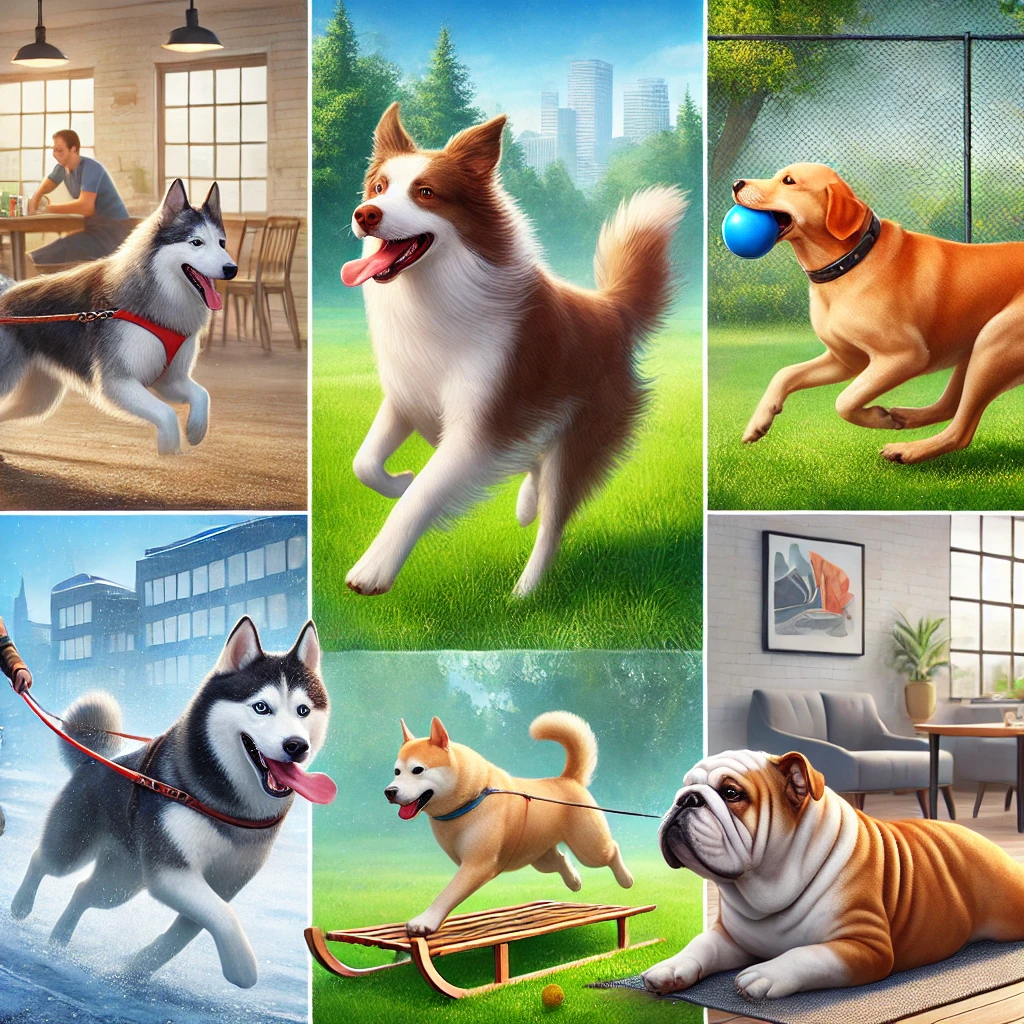
Some breeds require intense physical activity, while others are content with minimal exercise.
- High-Energy Dogs ( Siberian Husky, Australian Shepherd, Dalmatian) – Perfect for active individuals or families who enjoy outdoor activities.
- Moderate-Energy Dogs ( Boxer, Bulldog, Corgi) – Need regular exercise but adapt well to moderate activity levels.
- Low-Energy Dogs ( Basset Hound, Shih Tzu, Pug) – Best for those with a less active lifestyle or limited mobility.
3. Grooming and Maintenance Needs
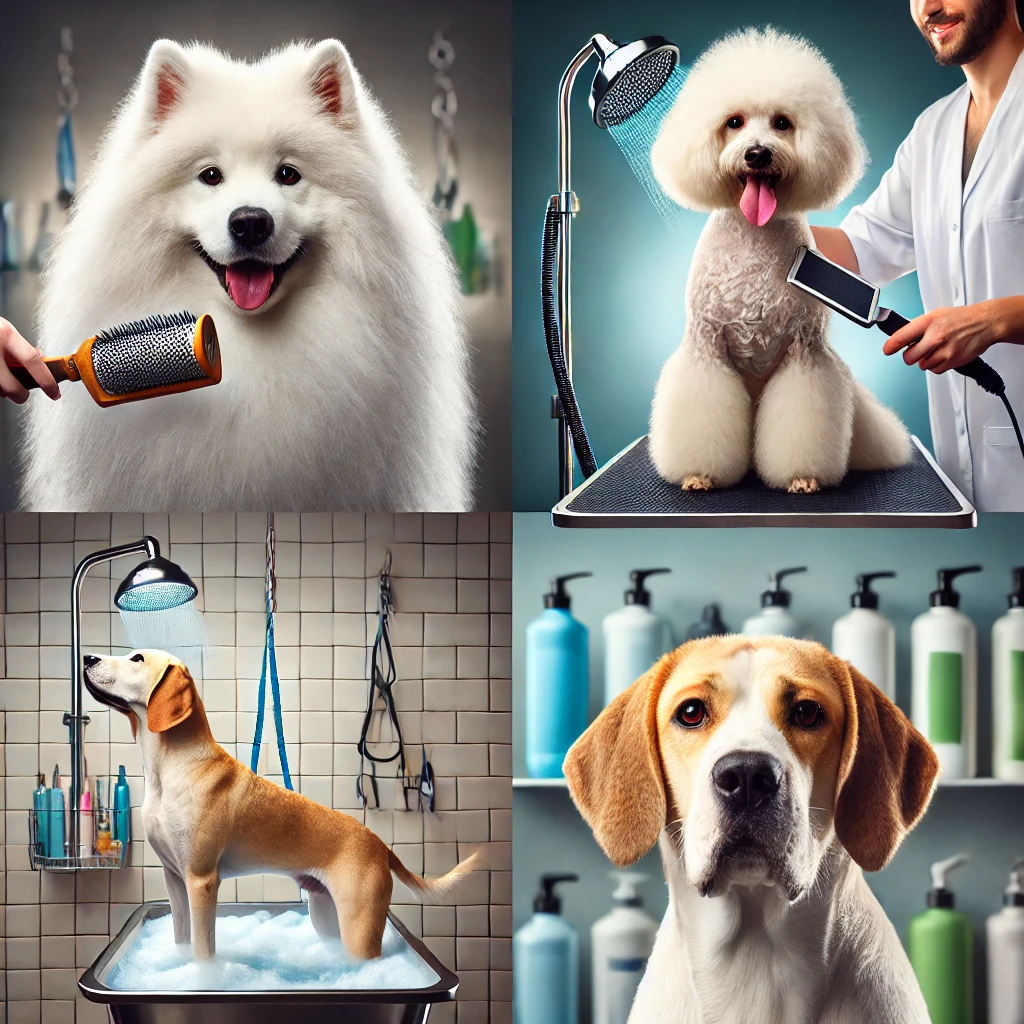
Different breeds have varied grooming requirements based on coat type.
- Low Maintenance ( Beagle, Doberman, Boxer) – Minimal grooming required.
- Moderate Maintenance (Golden Retriever, Cocker Spaniel, Border Collie) – Regular brushing and occasional grooming.
- High Maintenance (Poodle, Afghan Hound, Shih Tzu) – Require frequent grooming and coat care.
4. Temperament and Family Compatibility

Understanding a breed’s temperament helps in choosing a dog that fits well with your household.
-
Great with Families (Labrador Retriever, Golden Retriever, Collie) – Friendly, affectionate, and good with children.
-
Independent Breeds ( Akita, Afghan Hound, Chow Chow) – Require experienced handling and training.
-
Protective Breeds ( Rottweiler, German Shepherd, Doberman) – Naturally alert and good for home security.
5. Trainability and Intelligence
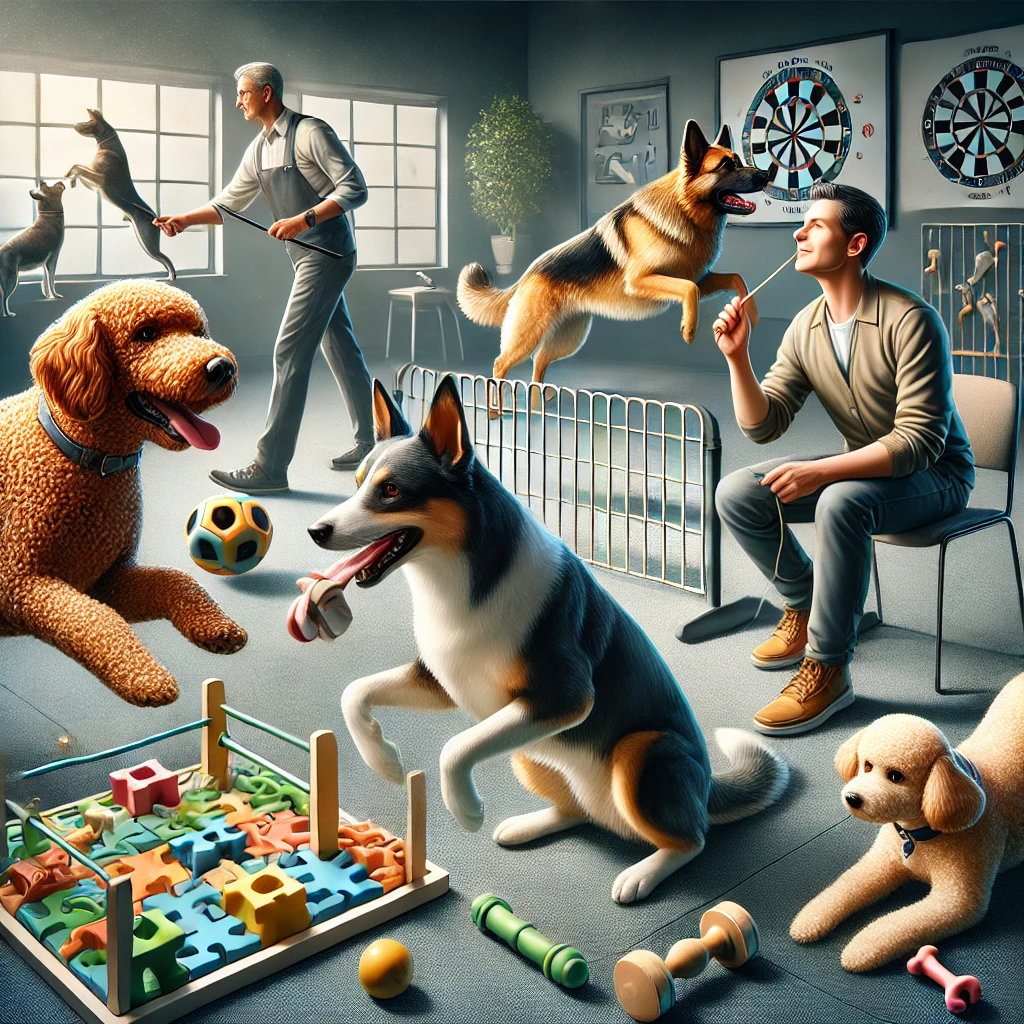
Some breeds are more eager to learn and easier to train than others.
-
Highly Trainable ( Border Collie, Poodle, German Shepherd) – Quick learners and excel in obedience training.
-
Moderately Trainable ( Beagle, Bulldog, Shiba Inu) – Can learn commands but may require patience.
-
Independent Thinkers (Afghan Hound, Basenji, Chow Chow) – Less eager to please, requiring consistent training.
Matching a Dog Breed to Your Lifestyle

For Active Individuals and Outdoor Enthusiasts
If you enjoy hiking, running, or outdoor adventures, consider breeds with high stamina and endurance.
-
Best choices: Siberian Husky, Border Collie, Labrador Retriever, Dalmatian
For Apartment Dwellers and City Living

Breeds that adapt well to small spaces and don’t require excessive exercise are ideal.
-
Best choices: French Bulldog, Cavalier King Charles Spaniel, Dachshund, Pug
For Families with Children
A family-friendly dog should be gentle, patient, and enjoy interaction.
-
Best choices: Golden Retriever, Labrador Retriever, Beagle, Boxer
For First-Time Dog Owners
Some breeds are easier to handle and more forgiving of training mistakes.
-
Best choices: Cavalier King Charles Spaniel, Labrador Retriever, Poodle, Bichon Frise
For Seniors or Low-Activity Owners

A low-energy, affectionate breed is best for companionship.
-
Best choices: Shih Tzu, Pomeranian, Basset Hound, Maltese
For Allergy Sufferers
Hypoallergenic breeds shed less and produce fewer allergens.
-
Best choices: Poodle, Schnauzer, Maltese, Portuguese Water Dog
Choosing the Right Dog Breed for Your Lifestyle
Selecting the right dog breed is essential for ensuring a harmonious relationship between you and your pet. Your lifestyle, living space, and financial capacity all play a significant role in determining which breed suits you best. Whether you are a job holder, a businessperson, a student, or a homemaker, there is a perfect breed for everyone. This guide will help you make the best choice based on your financial position and daily routine.
1. Job Holders Living in Apartments (Limited Salary)
For individuals working 9-to-5 jobs with limited salaries and living in apartments, a small breed is the best option. These dogs require minimal space, have lower food costs, and are easy to manage.
Best Breeds:
- Pug – Friendly, adaptable, and requires moderate exercise.
- French Bulldog – Low maintenance, affectionate, and apartment-friendly.
- Shih Tzu – Great for small spaces, but requires regular grooming.
- Chihuahua – Low feeding costs, small size, and minimal exercise needs.
2. Businessmen (High-Income & Large Living Spaces)

Businesspersons who have larger living spaces and a higher budget can afford to own bigger or more luxurious dog breeds. These dogs often require more space, food, and maintenance.
Best Breeds:
- Golden Retriever – Highly trainable, loving, and great with families.
- Labrador Retriever – Active, intelligent, and a great companion.
- Doberman Pinscher – Excellent guard dog, loyal, and protective.
- German Shepherd – Highly trainable, protective, and versatile.
- Siberian Husky – Requires large space and regular exercise; ideal for active owners.
3. Female Job Holders (Limited Salary & Apartment Living)

For working women who live in apartments, a low-maintenance dog that does not require extensive training or exercise is ideal.
Best Breeds:
- Maltese – Small, affectionate, and requires little space.
- Pomeranian – Active indoors, does not need large outdoor space.
- Cavalier King Charles Spaniel – Gentle, good-natured, and easy to manage.
- Miniature Schnauzer – Low shedding and apartment-friendly.
4. Female Businesswomen (High-Income & Large Homes)
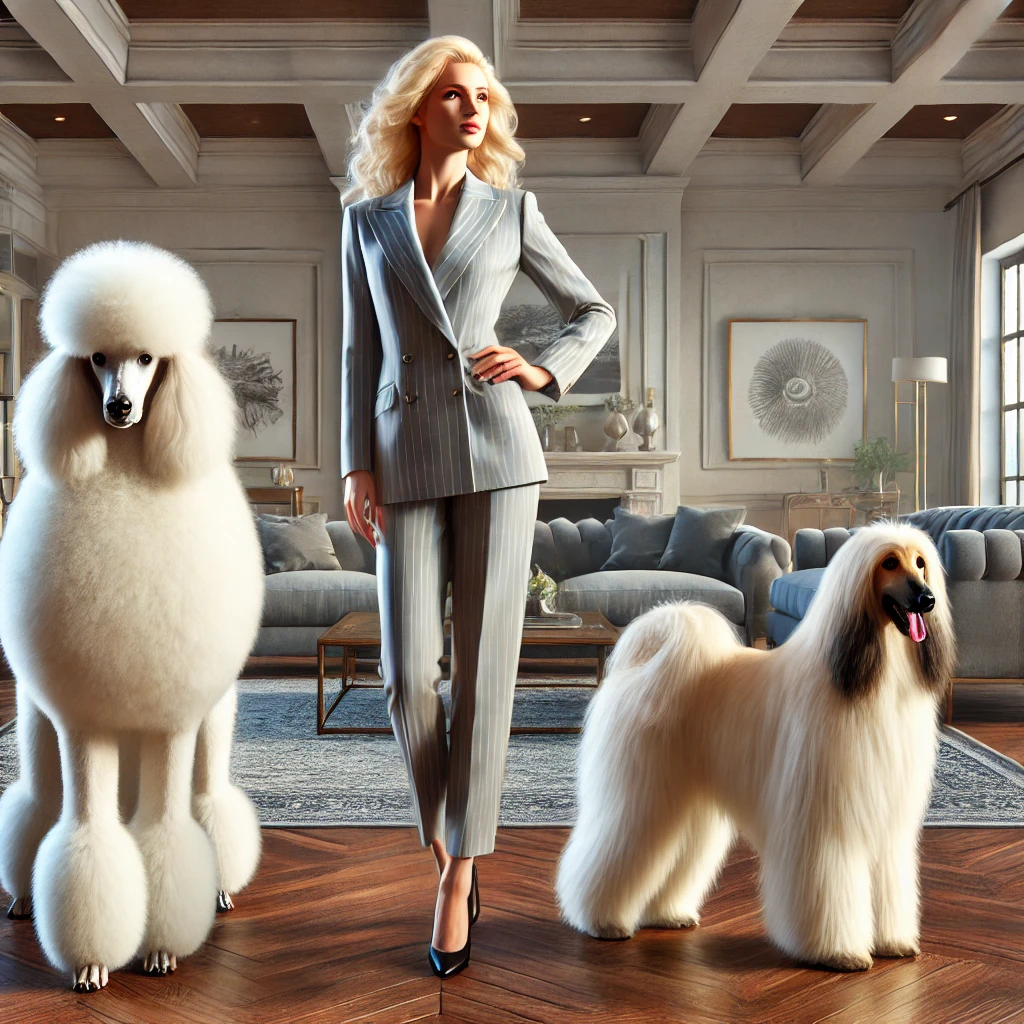
Women who run businesses and have a high budget can opt for luxury breeds that require proper maintenance and space.
Best Breeds:
- Poodle (Standard or Toy) – Elegant, intelligent, and hypoallergenic.
- Samoyed – Beautiful, affectionate, and needs regular grooming.
- Great Dane – Majestic, affectionate, and requires ample space.
- Afghan Hound – Stylish, independent, and requires grooming.
5. Homemakers (Stay-at-Home Ladies)

Housewives with time to take care of their pets can opt for affectionate and family-friendly breeds that require attention but fit well within a household setting.
Best Breeds:
- Beagle – Loyal, friendly, and great with children.
- Cocker Spaniel – Playful, affectionate, and family-oriented.
- Bichon Frise – Cheerful, hypoallergenic, and a great indoor companion.
- Shetland Sheepdog – Smart, obedient, and loves attention.
6. Students (Limited Budget & Space)
Students living in hostels or small apartments with limited budgets need breeds that are low-maintenance, small in size, and require minimal grooming.
Best Breeds:
- Dachshund – Compact, playful, and easy to maintain.
- Jack Russell Terrier – Energetic but does well in small spaces.
- Yorkshire Terrier – Low feeding costs, small size, and affectionate.
- Miniature Pinscher – Low-maintenance, playful, and independent.
7. College & University Students (Moderate Budget)
University students who have moderate budgets and are living in rented apartments need friendly and trainable dogs that adapt well to their routine.
Best Breeds:
- Border Collie – Intelligent and easy to train.
- Australian Shepherd – Active and good for those who love outdoor activities.
- Corgi – Social, adaptable, and compact.
- Boston Terrier – Smart, playful, and great for small apartments.
FAQs: Choosing the Right Dog Breed for Your Lifestyle
Selecting the perfect dog breed involves more than just falling for a cute face—it’s about matching energy levels, space requirements, and personality to your daily life. Below are the most common questions (and answers!) to help you find your ideal canine companion.
1. How Do I Know Which Dog Breed Is Right for Me?
Consider these factors:
Activity Level – Do you want a jogging buddy or a couch potato?
Living Space – Apartment-friendly vs. large-yard-needed breeds.
Grooming Commitment – High-maintenance coats vs. low-shedding breeds.
Time Availability – Some breeds need constant companionship; others are more independent.
Family Needs – Kid-friendly, hypoallergenic, or good with other pets?
Tip: Take online breed quizzes (AKC, Petfinder) for personalized suggestions.
2. What Are the Best Dog Breeds for Apartment Living?
Smaller, quieter, and lower-energy breeds tend to thrive in apartments:
- French Bulldog
- Cavalier King Charles Spaniel
- Shih Tzu
- Greyhound (surprisingly lazy indoors!)
- Boston Terrier
Avoid: Extremely vocal (Beagles) or high-energy breeds (Border Collies) unless you can provide ample exercise.
3. Which Breeds Are Best for Active Owners?
If you love hiking, running, or outdoor adventures, consider:
- Australian Shepherd
- Labrador Retriever
- Siberian Husky
- Vizsla
- Jack Russell Terrier
Warning: These breeds can become destructive if under-exercised!
4. What Are the Best Low-Maintenance Dog Breeds?
For minimal grooming and moderate energy:
- Chihuahua (short-haired)
- Dachshund
- Whippet
- Basenji (self-cleaning, like a cat!)
- Rat Terrier
Note: “Low-maintenance” doesn’t mean zero effort—all dogs need love, training, and vet care.
5. Which Breeds Are Best for Families with Kids?
Look for patient, gentle, and sturdy breeds:
- Golden Retriever
- Labrador Retriever
- Beagle
- Boxer
- Newfoundland (gentle giants!)
Avoid: Fragile toy breeds (e.g., Italian Greyhounds) or aggressive guard dogs if you have small children.
6. What Are the Best Hypoallergenic Dog Breeds?
For allergy sufferers, consider low-shedding breeds:
- Poodle (all sizes)
- Bichon Frise
- Portuguese Water Dog
- Schnauzer
- Maltese
Myth Buster: No dog is 100% hypoallergenic, but these produce less dander.
7. Should I Get a Puppy or an Adult Dog?
| Puppy | Adult Dog |
|---|---|
| Requires training (potty, obedience) | Often already trained |
| High energy, needs socialization | Calmer, established personality |
| Longer time commitment | May adapt quicker to your routine |
| Cute but destructive phase | Known behavior traits |
Best for first-time owners? Many recommend adopting an adult dog for an easier transition.
8. How Do I Find a Reputable Breeder vs. Adopting?
Reputable Breeder:
- Health-tests parents, provides AKC papers, allows meet-ups.
- Avoids “puppy mills” (red flag: multiple litters always available).
Adoption:
- Shelters and rescues often have mixed breeds (healthier genetic diversity!).
- Adult dogs’ personalities are already known.
Ethical Choice: Consider breed-specific rescues if you want a purebred without supporting breeding mills.
9. What If I Fall in Love with a Breed That Doesn’t Fit My Lifestyle?
- Be honest: Can you adjust your routine (more walks, grooming)?
- Compromise: Example: Love Huskies but live in a hot climate? Consider a mutt with Husky looks but less demanding needs.
- Foster First – Try before committing!
10. Where Can I Research Breed Temperaments & Health Issues?
Trusted Resources:
- AKC.org (Breed profiles)
- Your local vet (Breed-specific advice)
- Dog forums (Real-owner experiences)
- Meet the breed – Visit dog shows or breed meetups.
Closing Statement
The “perfect” dog is the one whose needs align with your lifestyle. Whether you adopt a playful mutt or a pedigreed pup, the right match means years of happiness for both of you!
Selecting the right dog breed is crucial for a happy and healthy companionship. Whether you are a job holder, a businessperson, a homemaker, or a student, there is a perfect breed to match your lifestyle and financial capability. By considering factors such as living space, budget, and time availability, you can ensure that your furry friend fits seamlessly into your life.
For more expert dog care tips, visit DogsReader and follow us on our social media platforms!
DogsReader – Your Trusted Canine Companion Guide
For more expert insights on dog breeds and pet care, visit DogsReader! Stay connected with us on Facebook and Instagram for the latest updates.
SMALL DOG BREEDS
How Cold is Too Cold for a Dog:
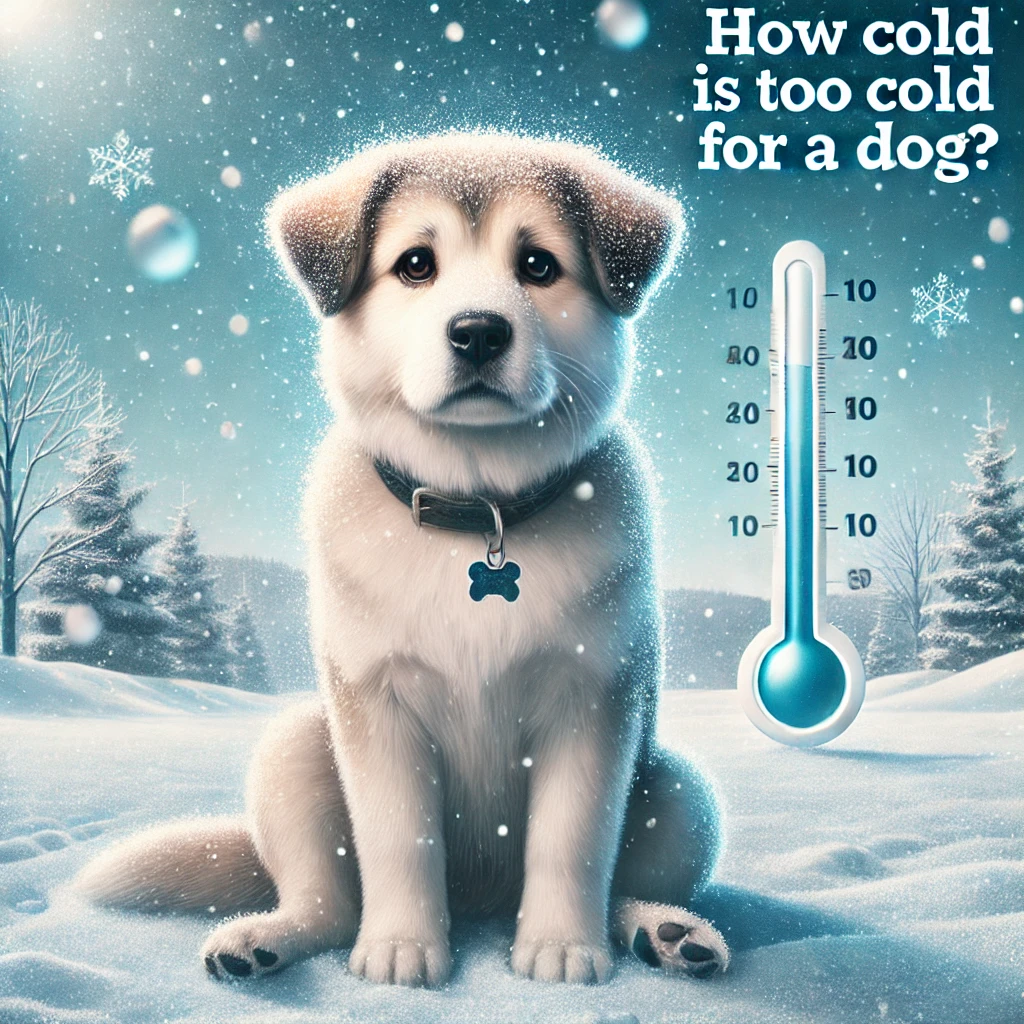
A Comprehensive Guide to Keeping Your Pup Safe in Winter
How Cold is Too Cold for a Dog: As temperatures drop, many dog owners wonder: How cold is too cold for a dog? While some dogs thrive in chilly weather, others are more sensitive to the cold and can suffer from hypothermia, frostbite, or other health issues. Understanding your dog’s tolerance for cold weather is essential to keeping them safe and comfortable during winter. This article covers everything you need to know about cold weather safety for dogs, including breed-specific considerations, signs of cold stress, and tips for protecting your furry friend.
Factors That Determine a Dog’s Cold Tolerance
Not all dogs handle cold weather the same way. Several factors influence how well your dog can tolerate the cold:
- Breed and Size:
- Cold-Weather Breeds:
- Huskies, Malamutes, and Saint Bernards have thick double coats and are built for cold climates.
- Small or Short-Haired Breeds:
- Chihuahuas, Greyhounds, and Dachshunds are more vulnerable to the cold.
- Coat Type:
- Dogs with thick, double-layered coats are better insulated against the cold.
- Short-haired or hairless dogs (e.g., Chinese Crested) need extra protection.
- Age and Health:
- Puppies, senior dogs, and dogs with health conditions (e.g., arthritis) are more sensitive to cold temperatures.
- Acclimatization:
- Dogs accustomed to cold weather handle it better than those used to warmer climates.
How Cold is Too Cold for a Dog?

The answer depends on your dog’s breed, size, and health. Here’s a general guideline:
| Temperature Range | Risk Level | Recommendations |
|---|---|---|
| 45°F (7°C) and above | Low Risk | Most dogs are comfortable. Monitor small or short-haired breeds. |
| 32°F (0°C) to 45°F (7°C) | Moderate Risk | Limit time outdoors. Provide coats for small or short-haired dogs. |
| 20°F (-6°C) to 32°F (0°C) | High Risk | Short walks only. Use protective gear like coats and boots. |
| Below 20°F (-6°C) | Extreme Risk | Avoid prolonged exposure. Frostbite and hypothermia are likely. |
Signs Your Dog is Too Cold
Watch for these signs that your dog is feeling the cold:
- Shivering: The most obvious sign of discomfort.
- Whining or Anxiety: Your dog may want to go inside.
- Slow Movements: Cold can make joints stiff and movement difficult.
- Paw Lifting: Indicates that the ground is too cold for their paws.
- Pale or Gray Gums: A sign of hypothermia or frostbite.
If you notice any of these signs, bring your dog indoors immediately and warm them up gradually.
Breed-Specific Considerations
Different breeds have different cold tolerances:
1. Cold-Weather Breeds (e.g., Siberian Husky, Alaskan Malamute)
- Can handle temperatures as low as -20°F (-29°C).
- Still need monitoring for frostbite on ears and paws.
2. Small or Toy Breeds (e.g., Chihuahua, Toy Poodle)
- At risk in temperatures below 45°F (7°C).
- Require sweaters or coats for outdoor walks.
3. Short-Haired Breeds (e.g., Greyhound, Boxer)
- Vulnerable in temperatures below 32°F (0°C).
- Need protective gear like coats and boots.
4. Senior Dogs and Puppies
- Less able to regulate body temperature.
- Limit outdoor time in cold weather.
How to Protect Your Dog in Cold Weather
- Dress Them Warmly:
-
- Use dog coats or sweaters for small, short-haired, or senior dogs.
- Protect paws with booties to prevent frostbite and exposure to salt or ice melt.
- Limit Outdoor Time:
-
- Shorten walks and avoid prolonged exposure to cold.
- Provide indoor exercise and mental stimulation.
- Create a Warm Space:
-
- Ensure your dog has a warm, draft-free place to sleep indoors.
- Use heated pet beds or blankets for extra warmth.
- Check Paws Regularly:
-
- Wipe paws after walks to remove ice, salt, or chemicals.
- Apply paw balm to prevent cracking and dryness.
- Adjust Their Diet:
-
- Dogs burning extra energy to stay warm may need more calories.
- Consult your vet before making dietary changes.
Dangers of Cold Weather for Dogs
- Hypothermia:
-
- Occurs when a dog’s body temperature drops dangerously low.
- Symptoms include shivering, lethargy, and shallow breathing.
- Frostbite:
-
- Affects extremities like ears, paws, and tails.
- Signs include pale or gray skin, swelling, and blisters.
- Chemical Exposure:
-
- Ice melt and antifreeze are toxic to dogs.
- Rinse your dog’s paws after walks to remove chemicals.
What to Do if Your Dog Gets Too Cold
- Bring Them Indoors: Move your dog to a warm, dry place.
- Wrap Them in Blankets: Use warm (not hot) blankets to raise their body temperature.
- Offer Warm Water: Provide lukewarm water to drink.
- Contact Your Vet: If symptoms of hypothermia or frostbite persist, seek immediate veterinary care.
Closing Statement
Understanding how cold is too cold for your dog is crucial for their safety and comfort during winter. By considering your dog’s breed, size, and health, you can take the necessary steps to protect them from the cold. Whether it’s dressing them in a cozy sweater, limiting outdoor time, or providing a warm indoor space, your dog relies on you to keep them safe during the chilly months. Stay vigilant, watch for signs of cold stress, and enjoy the winter season with your furry friend!
Frequently Asked Questions (FAQs) About Cold Weather Safety for Dogs
Below are detailed answers to common questions about how cold is too cold for dogs and how to keep them safe during winter.
1. How cold is too cold for dogs?
It depends on your dog’s breed, size, and health. Generally:
- 45°F (7°C) and above: Safe for most dogs.
- 32°F (0°C) to 45°F (7°C): Risky for small, short-haired, or senior dogs.
- Below 20°F (-6°C): Dangerous for all dogs; avoid prolonged exposure.
2. Can dogs get hypothermia?
Yes, dogs can develop hypothermia if exposed to cold temperatures for too long. Symptoms include shivering, lethargy, and shallow breathing. Immediate warming and veterinary care are essential.
3. What are the signs that my dog is too cold?
Signs include:
- Shivering
- Whining or anxiety
- Slow movements or stiffness
- Lifting paws off the ground
- Pale or gray gums
4. Do dogs need coats in winter?
Small, short-haired, or senior dogs benefit from coats or sweaters in cold weather. Cold-weather breeds like Huskies usually don’t need extra layers.
5. How can I protect my dog’s paws in winter?
- Use dog booties to protect against cold, ice, and chemicals.
- Apply paw balm to prevent cracking.
- Wipe paws after walks to remove ice, salt, or antifreeze.
6. Can dogs get frostbite?
Yes, frostbite can affect a dog’s ears, paws, and tail. Signs include pale or gray skin, swelling, and blisters. Seek veterinary care if you suspect frostbite.
7. How long can dogs stay outside in the cold?
It depends on the temperature and your dog’s breed:
- Above 45°F (7°C): Most dogs can stay outside for extended periods.
- Below 32°F (0°C): Limit outdoor time to 10-15 minutes.
- Below 20°F (-6°C): Only allow quick bathroom breaks.
8. Are some breeds more cold-tolerant than others?
Yes, cold-weather breeds like Huskies and Malamutes are more cold-tolerant, while small or short-haired breeds like Chihuahuas and Greyhounds are more vulnerable.
9. Can puppies and senior dogs handle the cold?
Puppies and senior dogs are less able to regulate their body temperature and are more sensitive to the cold. Limit their exposure and provide extra warmth.
10. What should I do if my dog gets too cold?
- Bring them indoors immediately.
- Wrap them in warm blankets.
- Offer lukewarm water to drink.
- Contact your vet if symptoms of hypothermia or frostbite persist.
11. Are heated dog beds safe?
Yes, heated dog beds are safe if used correctly. Choose beds with chew-resistant cords and automatic shut-off features.
12. Can dogs sleep outside in winter?
It’s not recommended. Even cold-weather breeds need a warm, dry shelter if they sleep outside. However, it’s safer to bring all dogs indoors during winter.
13. How can I exercise my dog in cold weather?
- Shorten walks and avoid icy or snowy areas.
- Provide indoor exercise like fetch or puzzle toys.
- Visit indoor dog parks or playdates.
14. Are ice melt and antifreeze dangerous for dogs?
Yes, both are toxic. Ice melt can irritate paws, and antifreeze is deadly if ingested. Rinse your dog’s paws after walks and keep antifreeze out of reach.
15. Should I adjust my dog’s diet in winter?
Dogs burning extra energy to stay warm may need more calories. Consult your vet before making dietary changes.
16. Can dogs wear boots in winter?
Yes, boots protect paws from cold, ice, and chemicals. Introduce them gradually to ensure your dog is comfortable.
17. How can I tell if my dog is enjoying the snow?
Signs your dog is enjoying the snow include:
- Playful behavior (running, digging).
- Wagging tail and relaxed body language.
- No signs of shivering or discomfort.
18. What temperature is too cold for small dogs?
Small dogs are at risk in temperatures below 45°F (7°C). Provide coats and limit outdoor time in colder weather.
19. Can dogs get sick from being wet in the cold?
Yes, wet fur loses its insulating properties, increasing the risk of hypothermia. Dry your dog thoroughly after they get wet.
20. How can I create a warm space for my dog indoors?
- Provide a cozy bed in a draft-free area.
- Use blankets or a heated pet bed.
- Keep the room temperature comfortable.
SMALL DOG BREEDS
How to Draw a Dog : Latest
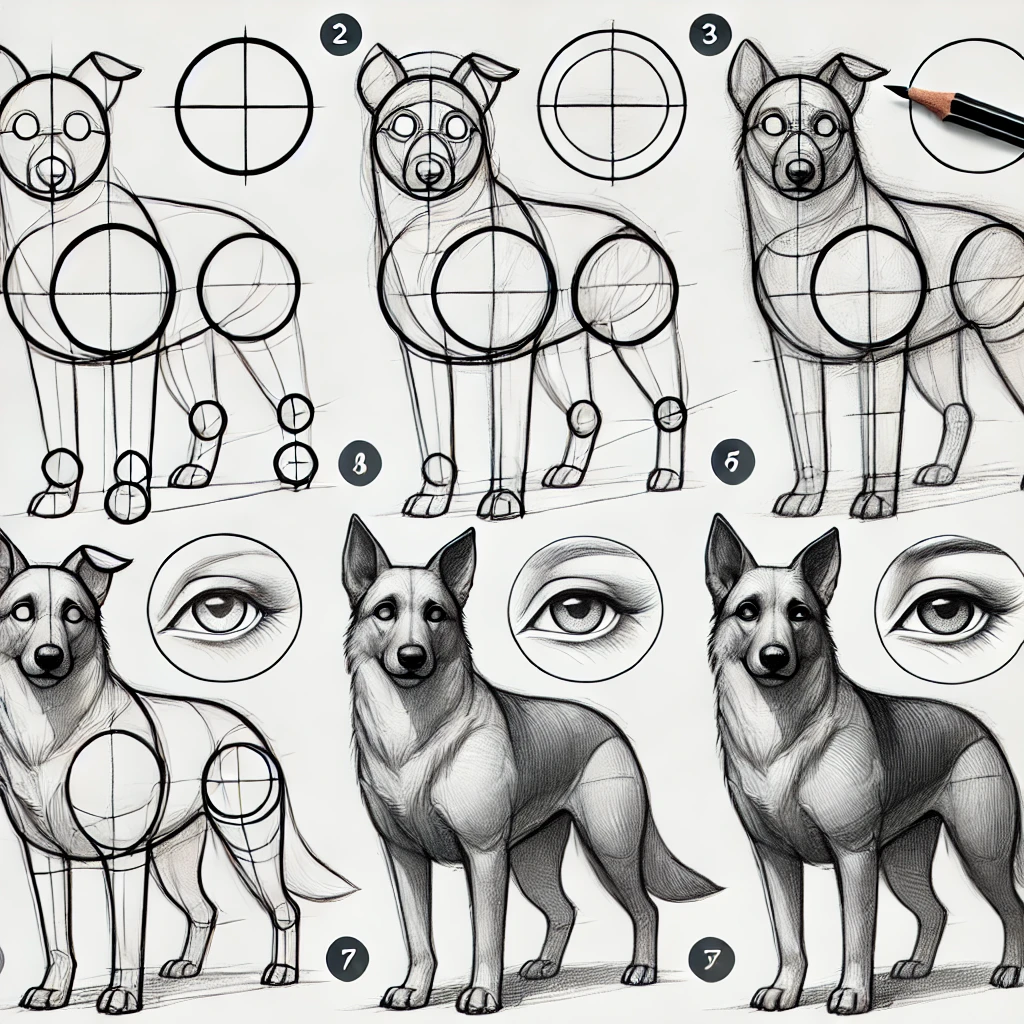
Step-by-Step Guide 🐶✏️
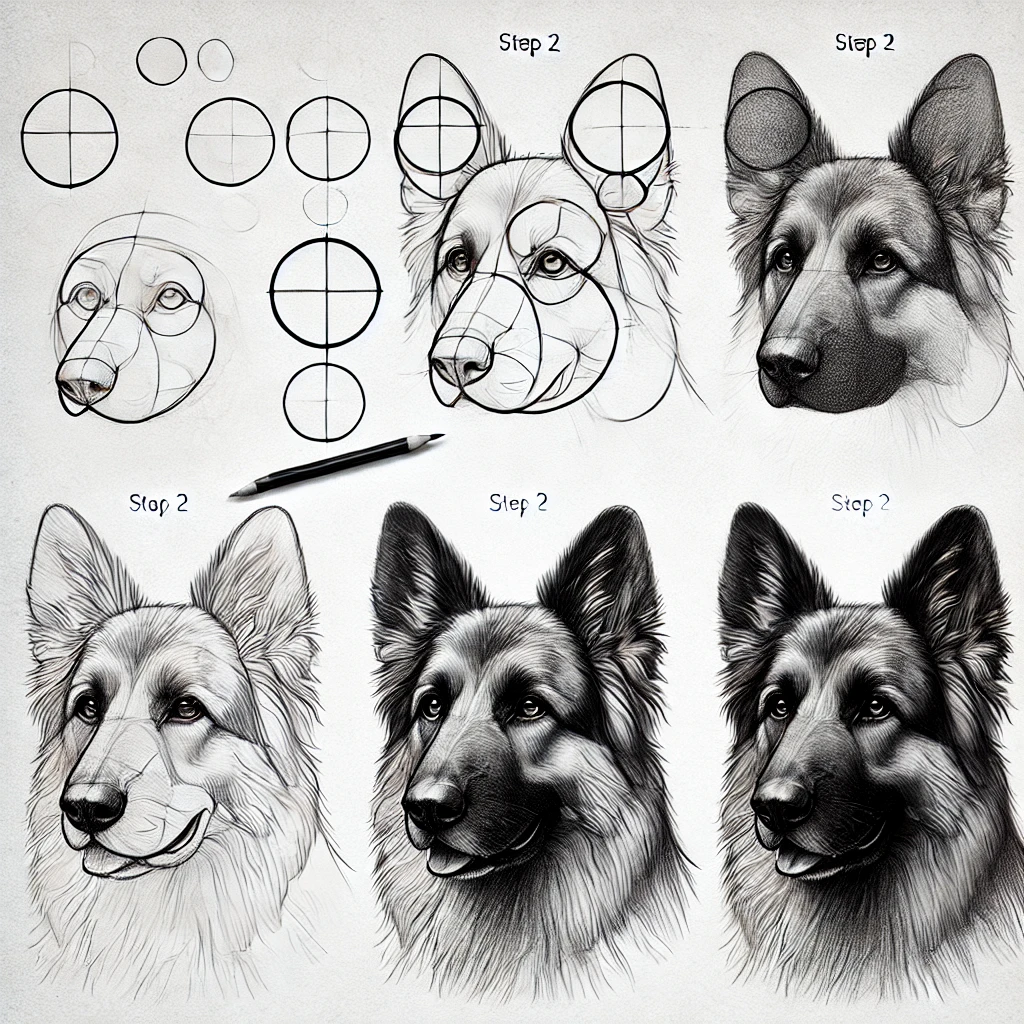

How to Draw a Dog : Latest Drawing a dog is an exciting creative journey. This guide takes inspiration from Wacom’s structured method but adds more artistic depth and realism! You’ll learn to sketch, refine, and create a masterpiece with text + drawing integration. 🎨
For more information regarding 4 seasonal cxcercieses of all dog breeds recommended by the doctors and experts,you can visit our youtube channel:
🖌️ Step 1: Sketching the Basic Framework
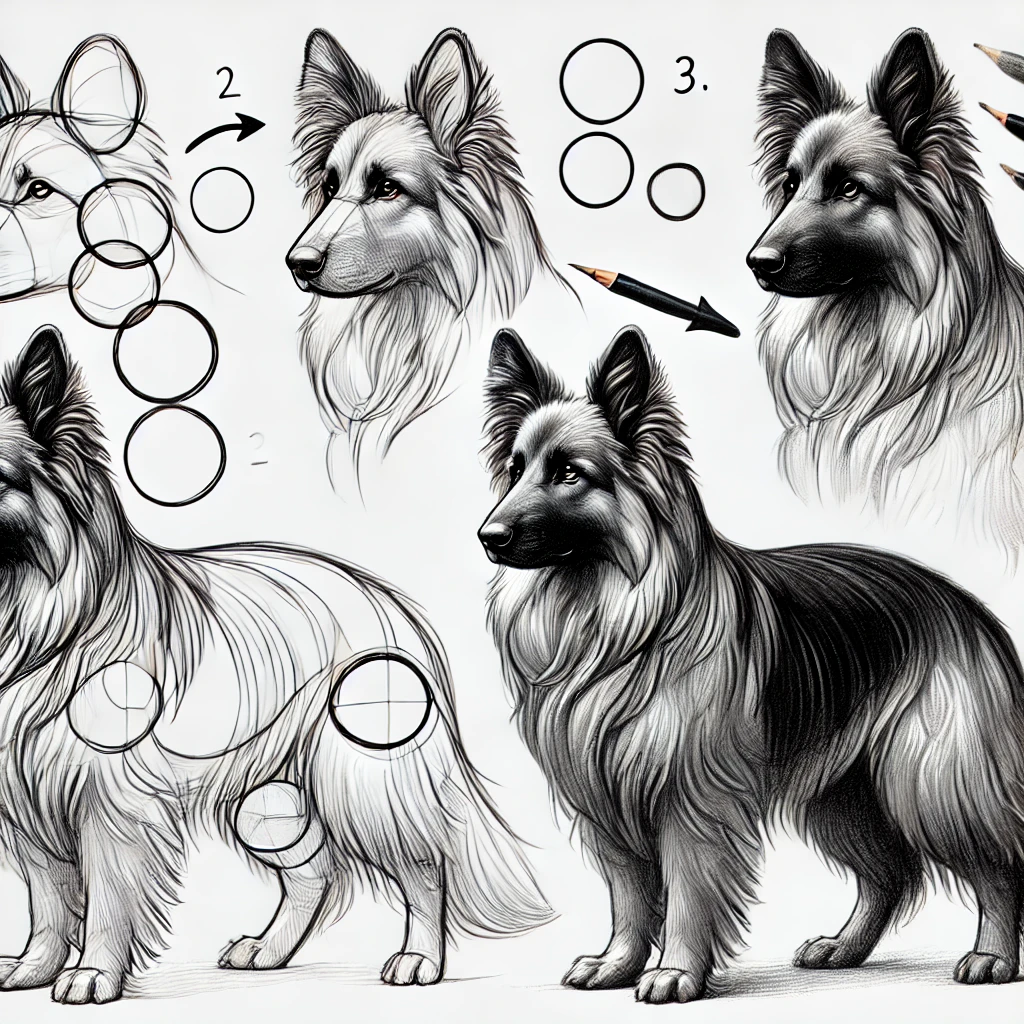
Start with simple geometric shapes to form the structure of the dog:
🟢 Head: Draw a circle for the head. 🟢 Body: Add an oval for the chest and another for the hindquarters. 🟢 Guidelines: Lightly sketch a vertical and horizontal cross in the head circle to map out facial features. 🟢 Legs & Tail: Use cylinder shapes for legs and a curved line for the tail.
➡️ This step is crucial as it lays the foundation! ✏️
✍️ Step 2: Refining the Silhouette
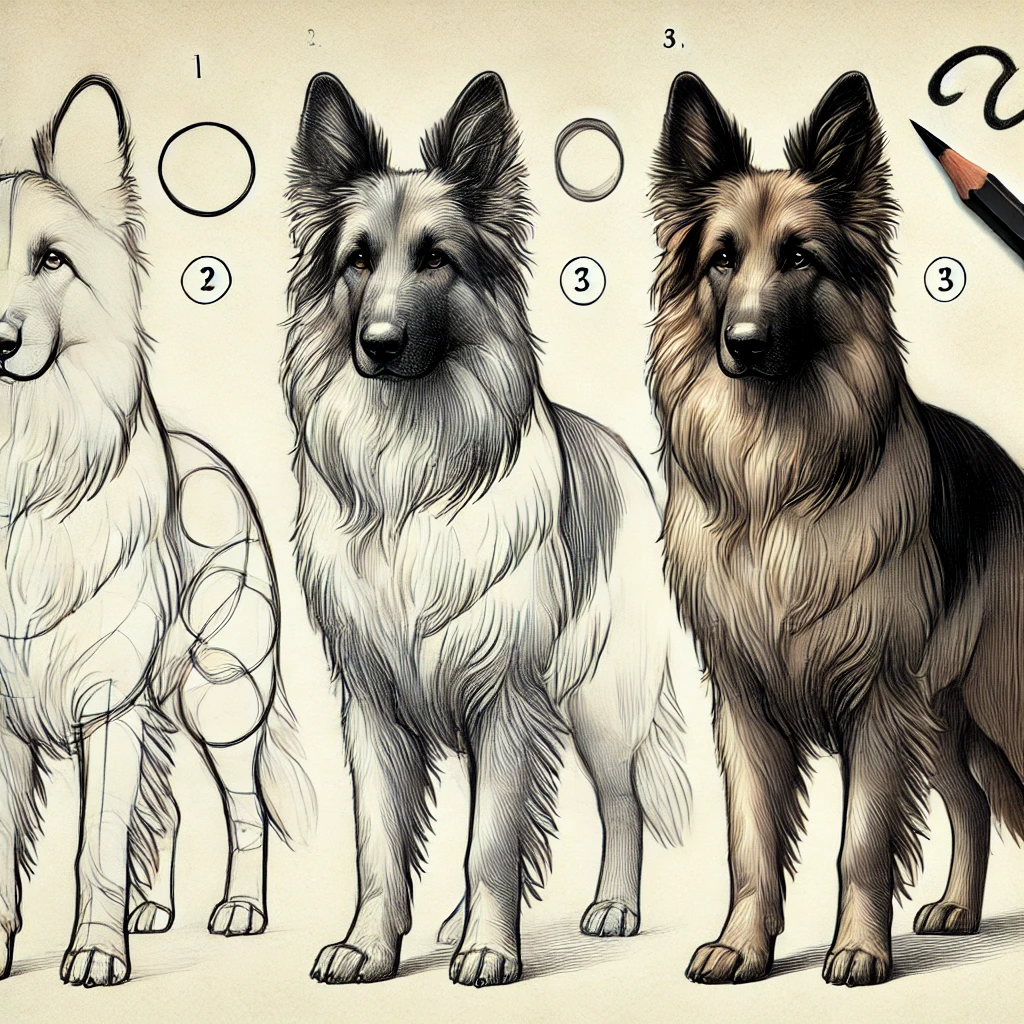
Now, let’s transform those basic shapes into a dog’s actual form:
- Outline the snout and jawline by extending the head circle forward.
- Define the ears (floppy or pointed, depending on the breed).
- Refine the body curves to connect the chest and hind area smoothly.
- Sketch the paws with rounded shapes at the bottom of the legs.
🔍 Tip: Use light strokes so you can erase mistakes easily! 🖊️
👀 Step 3: Facial Features & Details
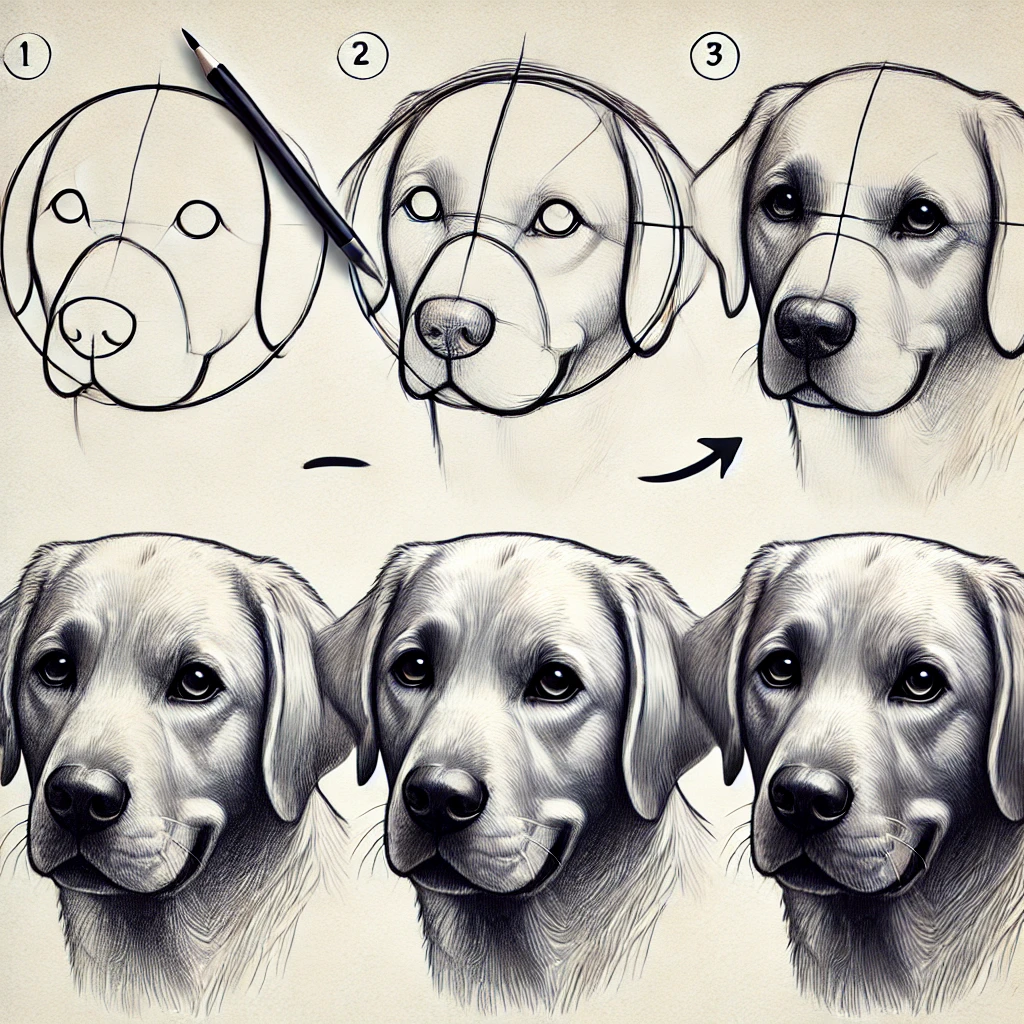
Time to give your dog some personality! 🐕
🎯 Eyes: Draw almond-shaped eyes with small pupils and highlights for realism. 🎯 Nose: Add a small rounded shape with tiny nostrils. 🎯 Mouth: A simple curved line for a gentle smile or open mouth for a playful look. 🎯 Ears: Shape them according to breed—floppy, upright, or rounded.
🔹 Dogs’ expressions are key to making the drawing lively! 🖌️
🖊️ Step 4: Adding Fur Texture & Depth
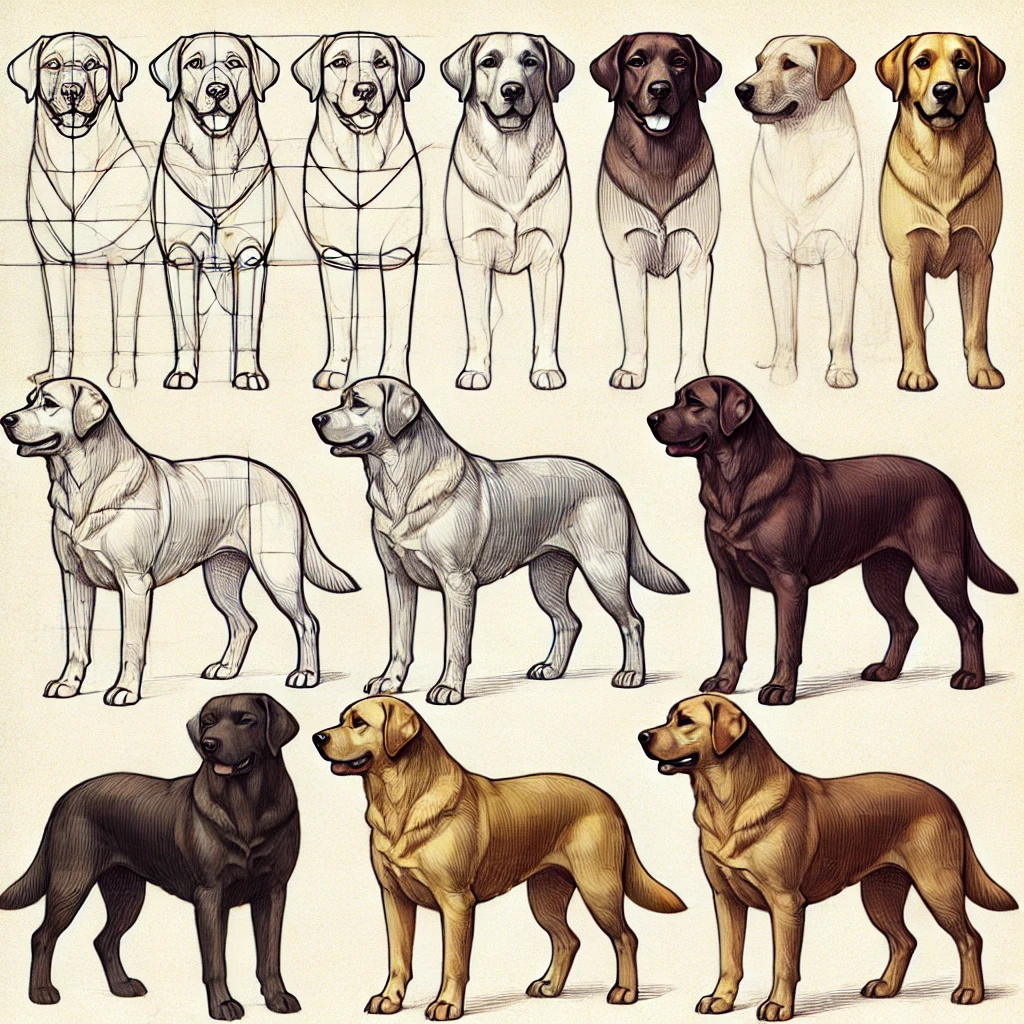
1️⃣ Short Hair: Use short, delicate pencil strokes to create soft fur. 2️⃣ Long Hair: Layer strokes in flowing motions to simulate fluffy textures. 3️⃣ Shading: Darken areas under the ears, neck, and legs to add depth. 4️⃣ Contrast: Erase some areas slightly to create highlights.
✏️ Use a blending stump for smooth shading! 🖍️
🎨 Step 5: Realistic Dog Drawing Section
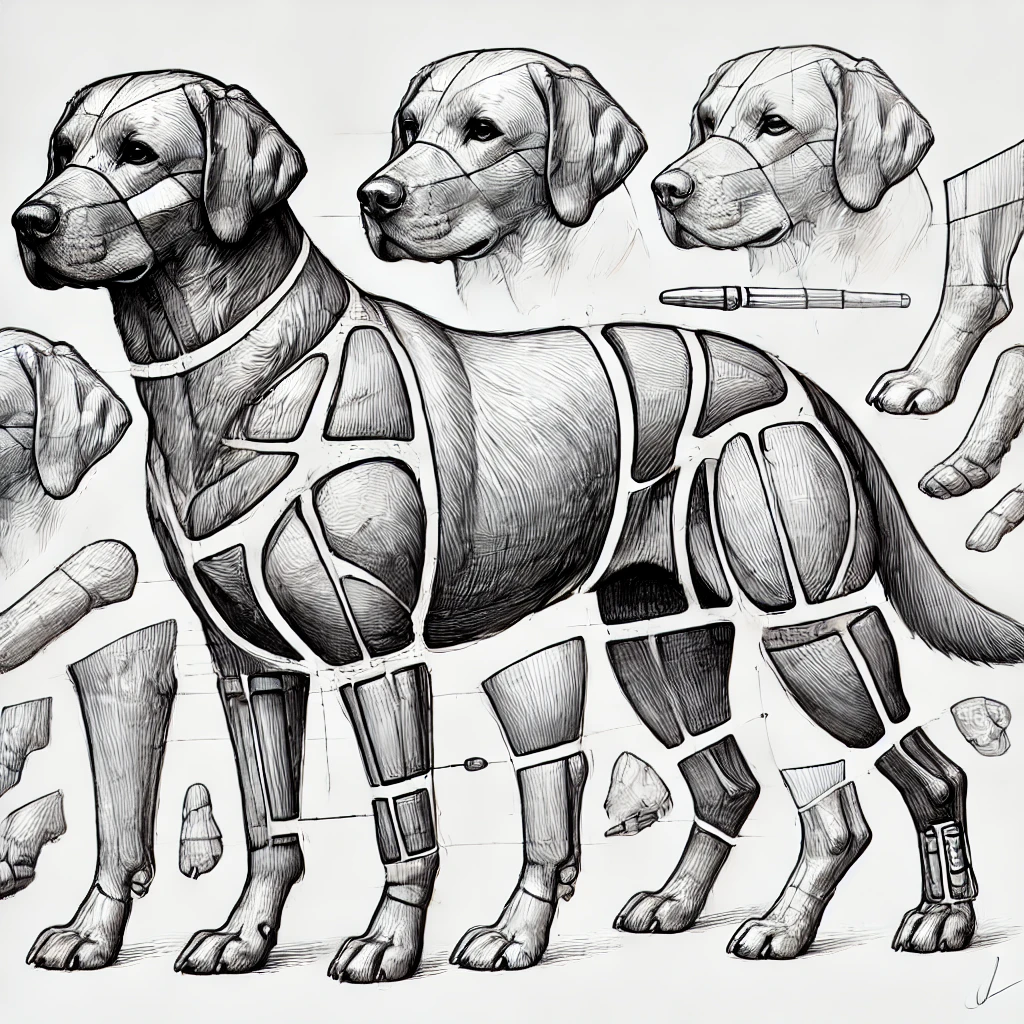
If you want a hyper-realistic result, here’s what to do:
✅ Fine Details: Focus on small elements like fur strands, whiskers, and paw pads. ✅ Layered Shading: Use cross-hatching and smudging techniques to create rich textures. ✅ Reflective Eyes: Add bright highlights for glossy, soulful eyes. ✅ Final Touches: Use an eraser to highlight fur sections and enhance realism.
🐕🦺 This is what makes your drawing stand out from a simple sketch! ✨
🖍️ Step 6: Optional Inking & Coloring

- Outline your final sketch with a fine liner for clarity.
- Use colored pencils or markers for a vibrant touch.
- Blend colors gradually for a soft, natural effect.
🎭 This step enhances your drawing’s depth and visual impact!
🌟 Closing Statement
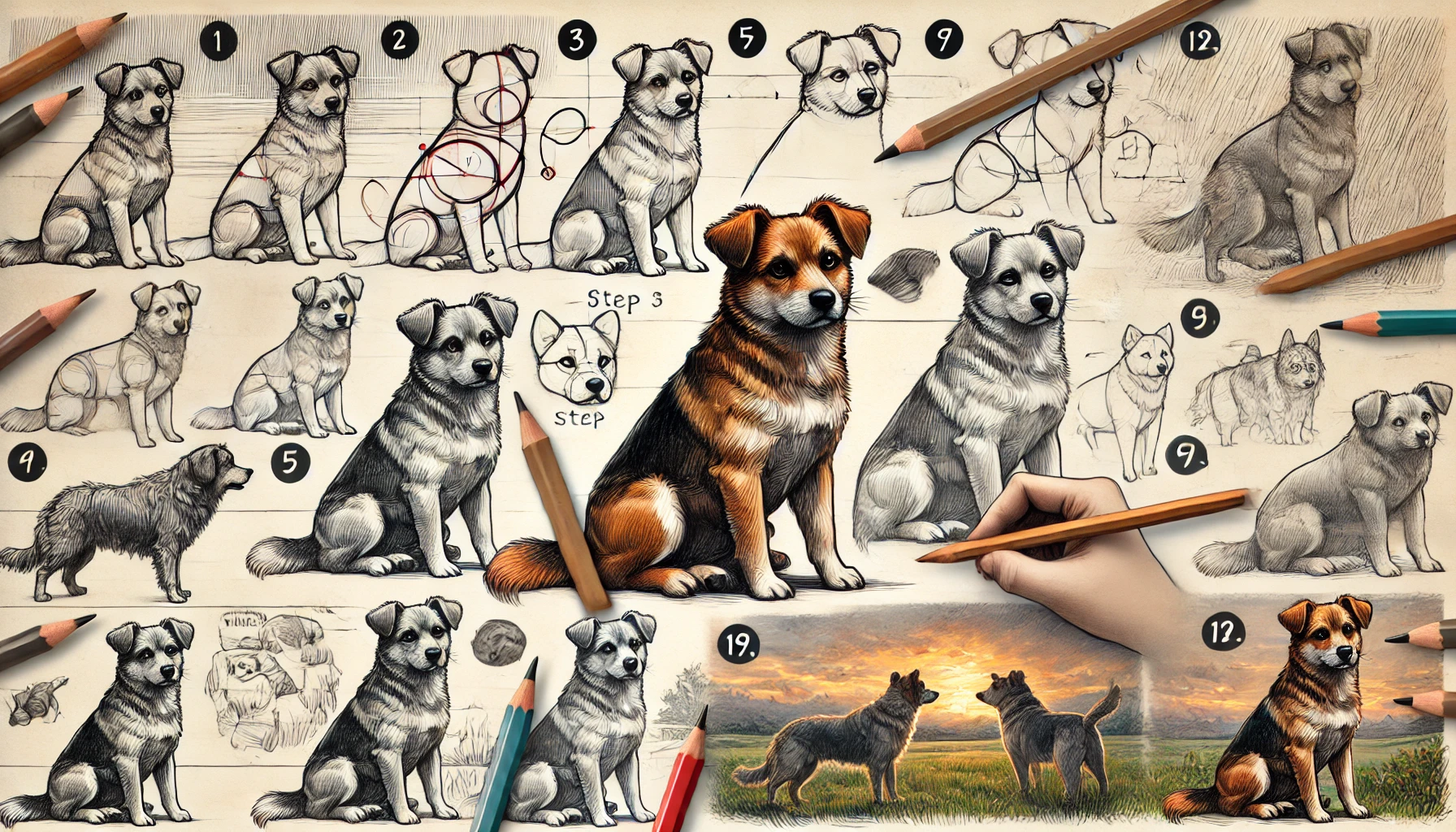
Now you’ve created a stunning dog drawing—combining structured sketching with detailed realism! Whether you prefer cartoon–style, semi–realistic, or ultra-realistic art, this guide ensures an amazing result.
📌 Practice different dog breeds to master various textures and features!
🐶 Happy Drawing! 🖊️🎨
🧐 FAQs (Frequently Asked Questions)

1. What are the best tools for dog drawing?
For beginners, pencils (HB, 2B, and 4B), erasers, fine liners, and blending stumps are great choices. Digital artists can use Wacom tablets, Procreate, or Photoshop.
2. How can I improve my dog drawing skills?
Practice regularly by drawing different breeds, studying real-life dog photos, and experimenting with fur textures, shading, and expressions.
3. Which dog breeds are easiest to draw?
Labradors, Beagles, and Golden Retrievers have simple shapes and fur patterns, making them great for beginners.
4. How do I make my drawing look realistic?
Use layered shading, detailed fur strokes, and highlights in the eyes and nose to achieve a lifelike effect.
5. Can I use reference images?
Absolutely! Reference images help capture proportions, expressions, and unique breed features accurately.
6. What’s the difference between sketching and inking?
Sketching is the rough outline of your drawing, while inking adds definition and clarity by outlining the final shapes.
7. Should I draw digitally or on paper?
Both are great! Paper drawing improves hand coordination, while digital drawing allows easy corrections and advanced effects.
8. How can I add motion to my dog drawing?
Capture movement by sketching dynamic poses, flowing fur, and slight paw lifts to create action.
9. What’s the best way to shade fur?
Use light, directional strokes and blend with a soft brush or tissue to create a realistic fur texture.
10. Where can I find inspiration for dog drawings?
Look at real dogs, photographs, art tutorials, and animated films for ideas and styles! 🐶✨
-

 SMALL DOG BREEDS4 months ago
SMALL DOG BREEDS4 months agoMaltese: A Beloved Companion
-

 Large Breeds4 months ago
Large Breeds4 months agoSamoyeds Hypoallergenic: Closer Look at the Breed
-

 SMALL DOG BREEDS4 months ago
SMALL DOG BREEDS4 months agoMerle Pomeranian: A Adorable Companion
-

 Large Breeds4 months ago
Large Breeds4 months agoStandard Poodle Weight: Country Wise
-
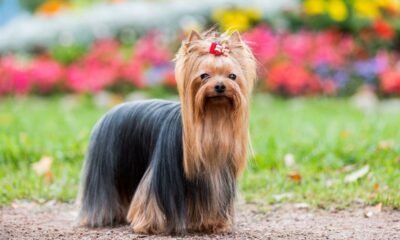
 SMALL DOG BREEDS4 months ago
SMALL DOG BREEDS4 months agoYorkshire Terrier: a Big Personality
-

 MEDIUM BREEDS4 months ago
MEDIUM BREEDS4 months agoAmerican Water Spaniel Colors Chocolate In Crcols:
-

 Terrier Breeds3 months ago
Terrier Breeds3 months agoDog Breeds: by Country & Category
-

 Experts Nutritions3 months ago
Experts Nutritions3 months agoBest Dog Food: Large Breeds










